Over 49 things to see and do in San Francisco
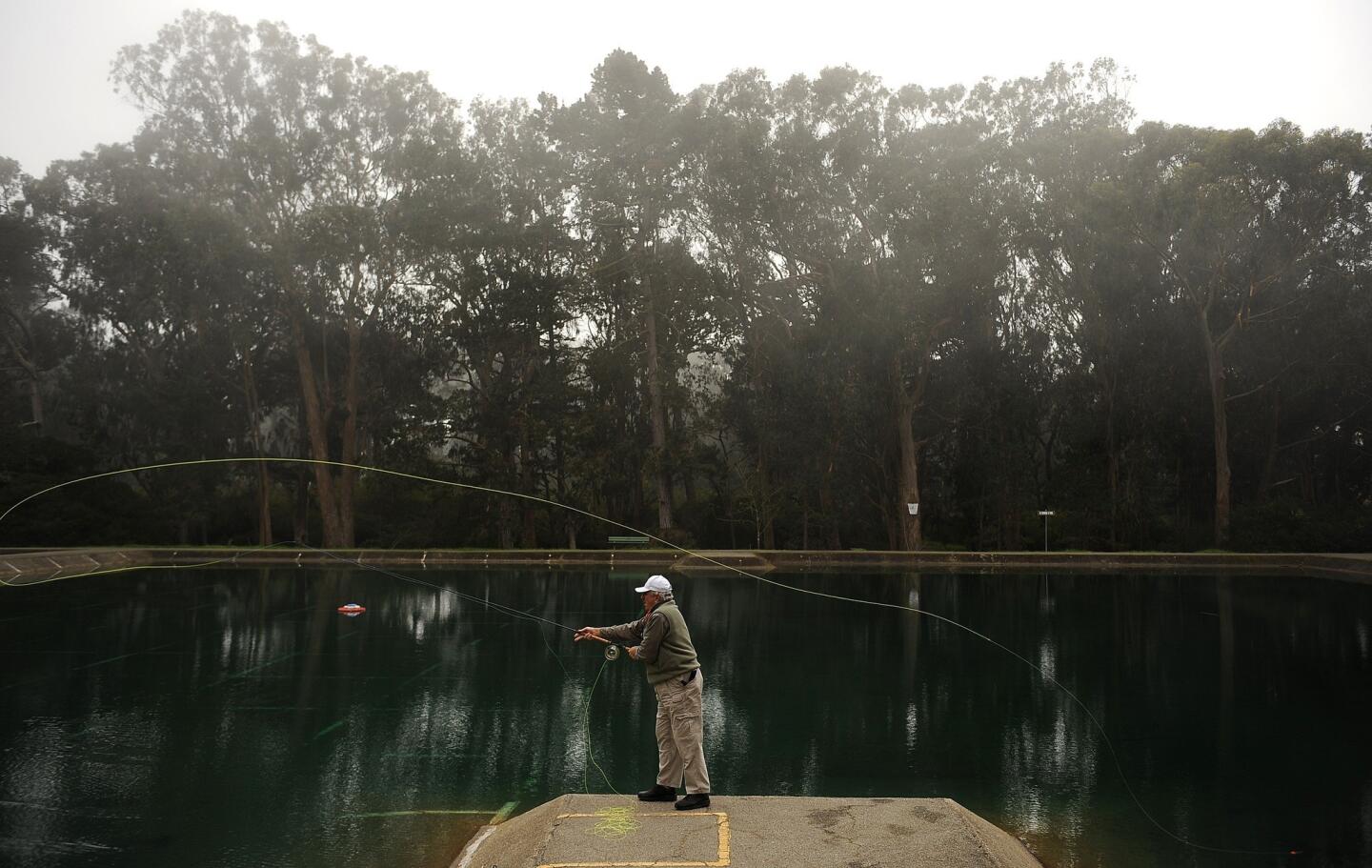
Aside from the bison roaming nearby, these fly-casting practice ponds might be the most surprising and alluring park attraction in America. The casting pools draw world championships and expert anglers from the members-only lodge nearby. But the facility is also open to the public at no charge. Free lessons (and lunch) on the second Saturday of each month, starting at 9:30 a.m. In the heart of Golden Gate Park; http://www.ggacc.org. (Wally Skalij / Los Angeles Times)
For a small city (about 7 miles by 7 miles), San Francisco changes fast, especially the restaurants. If your itinerary is dominated by reassuring old favorites (Union Square, again! City Lights books, again!), you may be missing a lot. To remedy that, six of us fanned out across the 49 square miles in late fall and early winter, using public transportation -- bus and BART -- and scoped out 49 listings of sweet spots in the city that are new, newly transformed or just underappreciated. (Of course, we ended up with more than 49.)
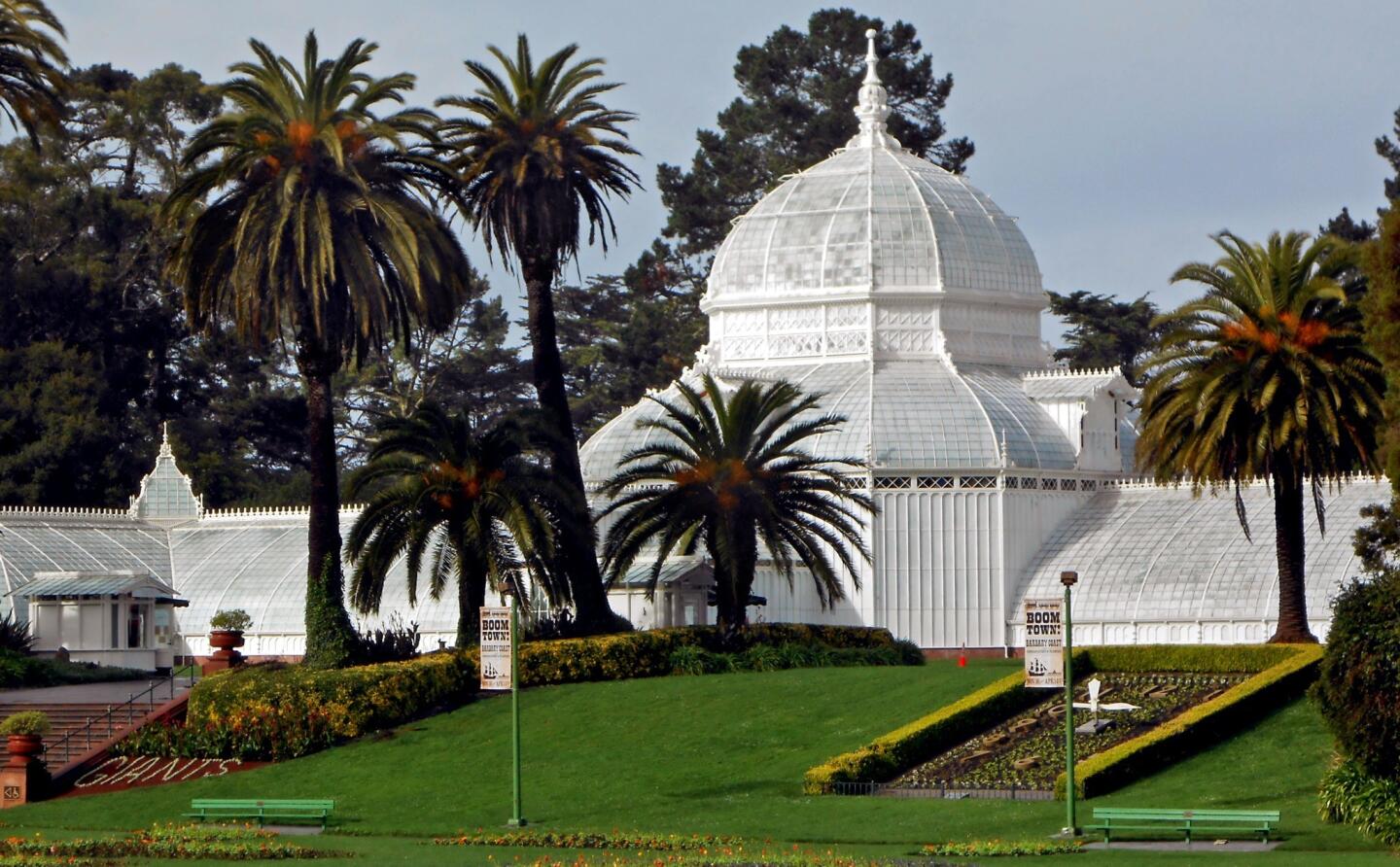
The conservatory is a symphony of plant life. Through its 16,000 whitewashed panes of glass, the sun shines on hibiscus, bromeliads, ferns, taro plants, water lilies, lotus and more. Catch a tour with a docent at 11 a.m., 12:30 or 2:30 p.m. and learn, as I did, about such weird specimens as the Dracula orchid. “It was not named for Bela Lugosi,” docent Judy Fayollat told my group. “The fellow who found it thought it looked like a little dragon.” Dracula derives from draco, Latin for dragon, she said. That might give you a little chill, except there are places in the conservatory where it’s 85 degrees and hotter -- nice on a chilly day and remember, you’re in San Francisco, so when isn’t it? The only thing that breaks the harmonious atmosphere are the explosions at one end of the building. A special exhibit celebrating the city’s Gold Rush years (through April 14) comes complete with recorded blasts, but its trolleys, trains and ships that move and hoot and “smoke” could keep younger folks engaged. It’s included with admission: $7 for adults, $5 for kids 12-17, college students and seniors 65 and older, $2 for kids 5-11 and free for kids 4 and younger. Open 10 a.m.-4 p.m. Tuesdays-Sundays. 100 John F. Kennedy Drive; (415) 831-2090, http://www.conservatoryofflowers.org. (Catharine Hamm / Los Angeles Times)
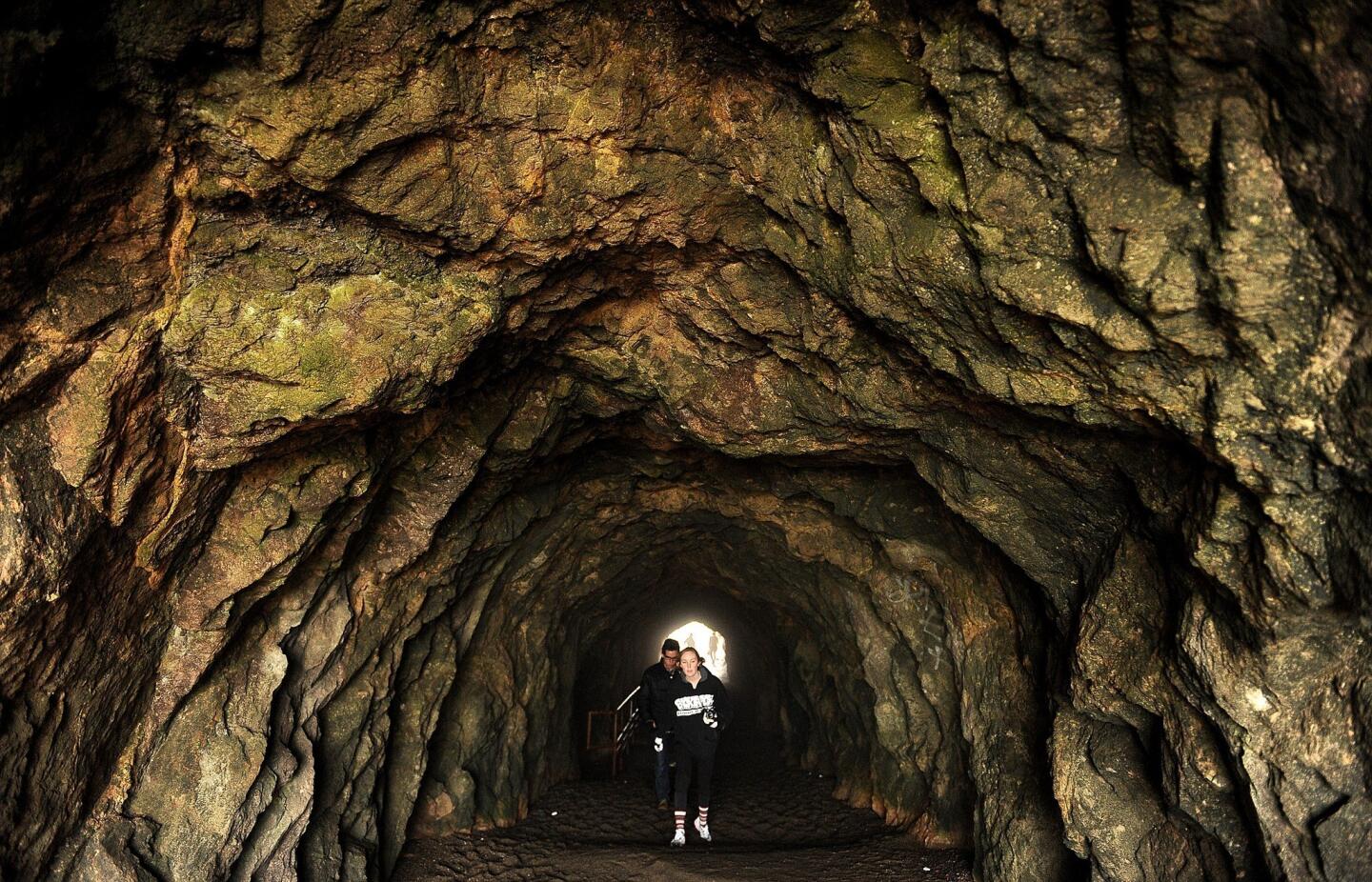
Start with views and history at the Lands End Lookout Visitor Center (opened in 2012) on the city’s western edge. Then prowl the ruins of the Sutro Baths (pictured). Next, nip into the Cliff House for a pricey ocean-view meal or to nearby Louis’ for a cup of red chowder. But you want to raise a sweat, so head northeast for about a mile on the much longer Coastal Trail, amid big trees and views of the Golden Gate Bridge and Marin Headlands. Then double back. Lands End Lookout, 680 Point Lobos Ave.; (415) 426-5240, http://www.parksconservancy.org/visit/park-sites/lands-end.html. (Wally Skalij / Los Angeles Times)
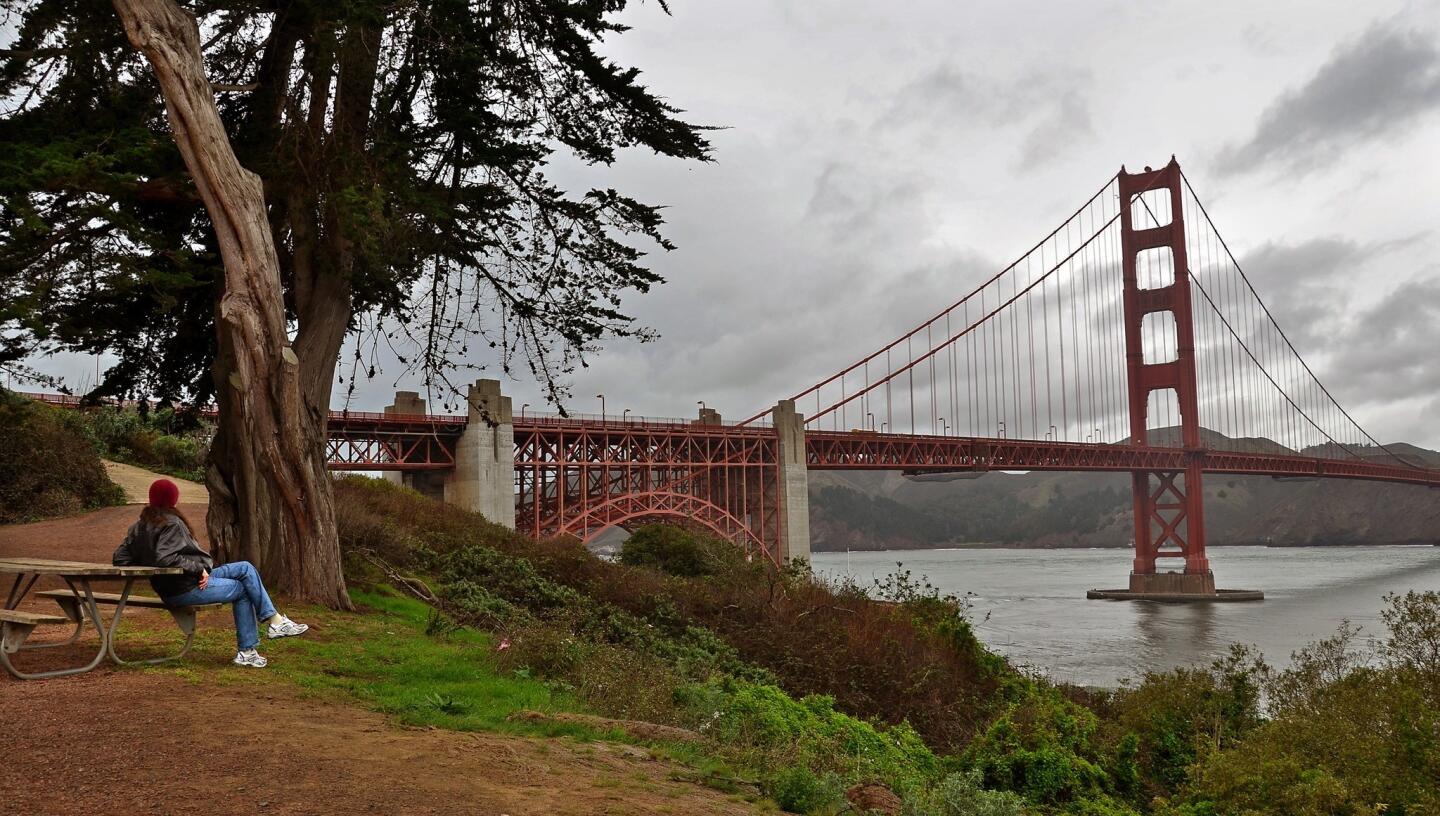
To mark the structure’s 75th anniversary last year, local and federal agencies joined to make upgrades and additions to the plaza where tour buses stop. Besides a new gift shop, there’s a green screen photo op, so even in soupy fog, you can get a doctored photo of yourself atop the bridge’s rigging under a clear blue sky. (It’s $20 for two 5x7 prints.) To leave the tour-bus crowd behind, descend a short trail to the Warming Hut, near water’s edge. There you’ll find a little pier, another great view and a shop-cafe with a better selection and better food than up the hill. The plaza stands at the S.F. end of Golden Gate Bridge. (415) 921-5858, http://www.goldengatebridge.org. (Christopher Reynolds / Los Angeles Times)
Advertisement
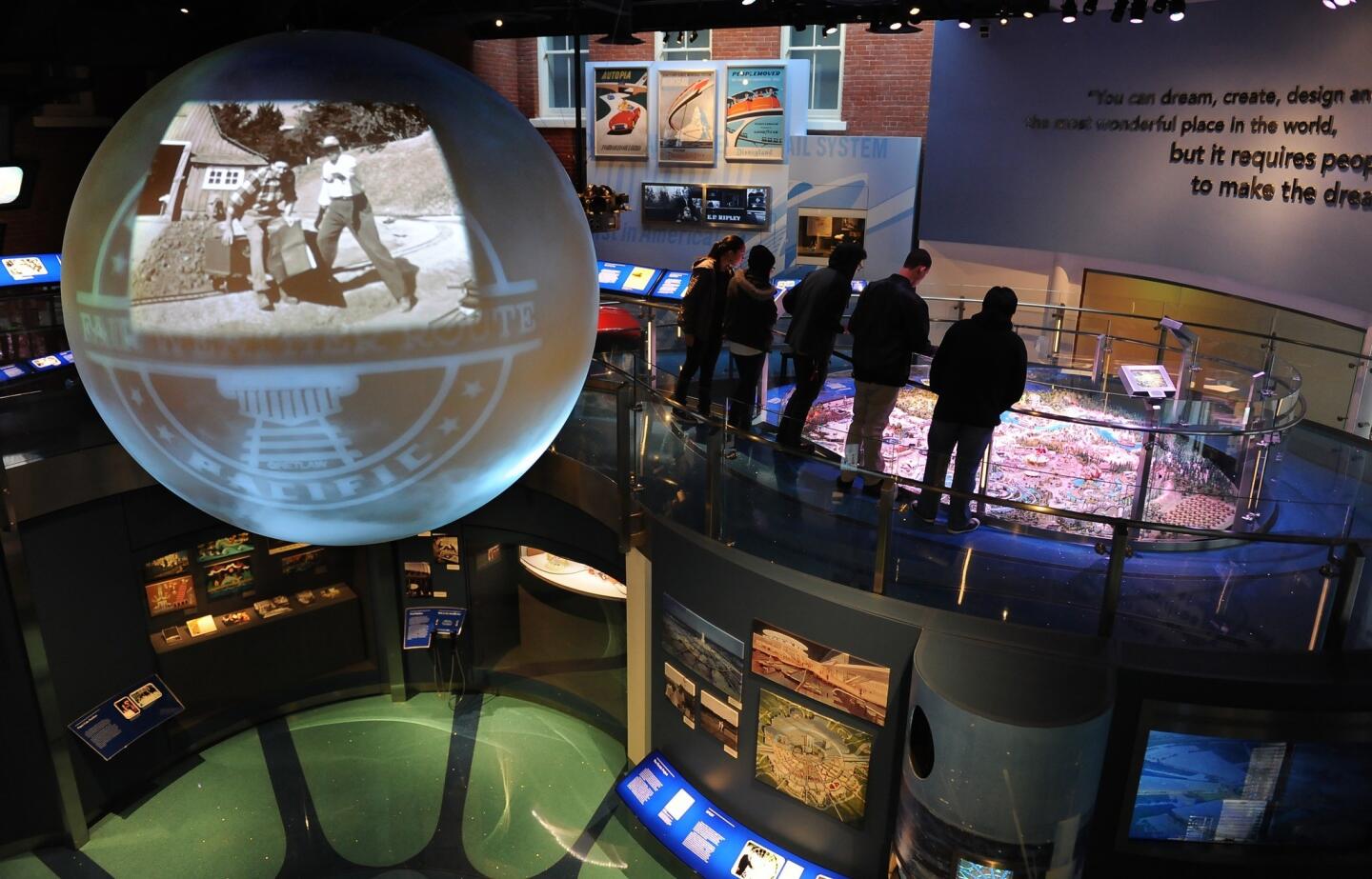
Visitors with small children (no strollers allowed) who are expecting a theme park-like experience might be better off elsewhere. Instead, this museum (a former Presidio barracks) is tailored for die-hard fans who expect no less than a scholarly look at Disney’s life and work, presented in 10 galleries. Still, there’s lots of fun here -- check out the enormous model of Disneyland and the console TVs playing reruns of “Wonderful World of Color.” Be forewarned: My cab driver had never heard of the museum but insisted it was in Golden Gate Park. On certain evenings, the museum hosts Animate Your Night, an after-hours party with entertainment and cocktails. 104 Montgomery St., the Presidio; (415) 345-6800, http://www.waltdisney.org. GPS’ers will need the 94129 ZIP Code. Without it, you will be directed to Montgomery Street in the Financial District. Open 10 a.m.- 6 p.m. Wednesdays-Mondays. Adults $20, seniors/students $15,children ages 6-17 $12. (Wally Skalij / Los Angeles Times)
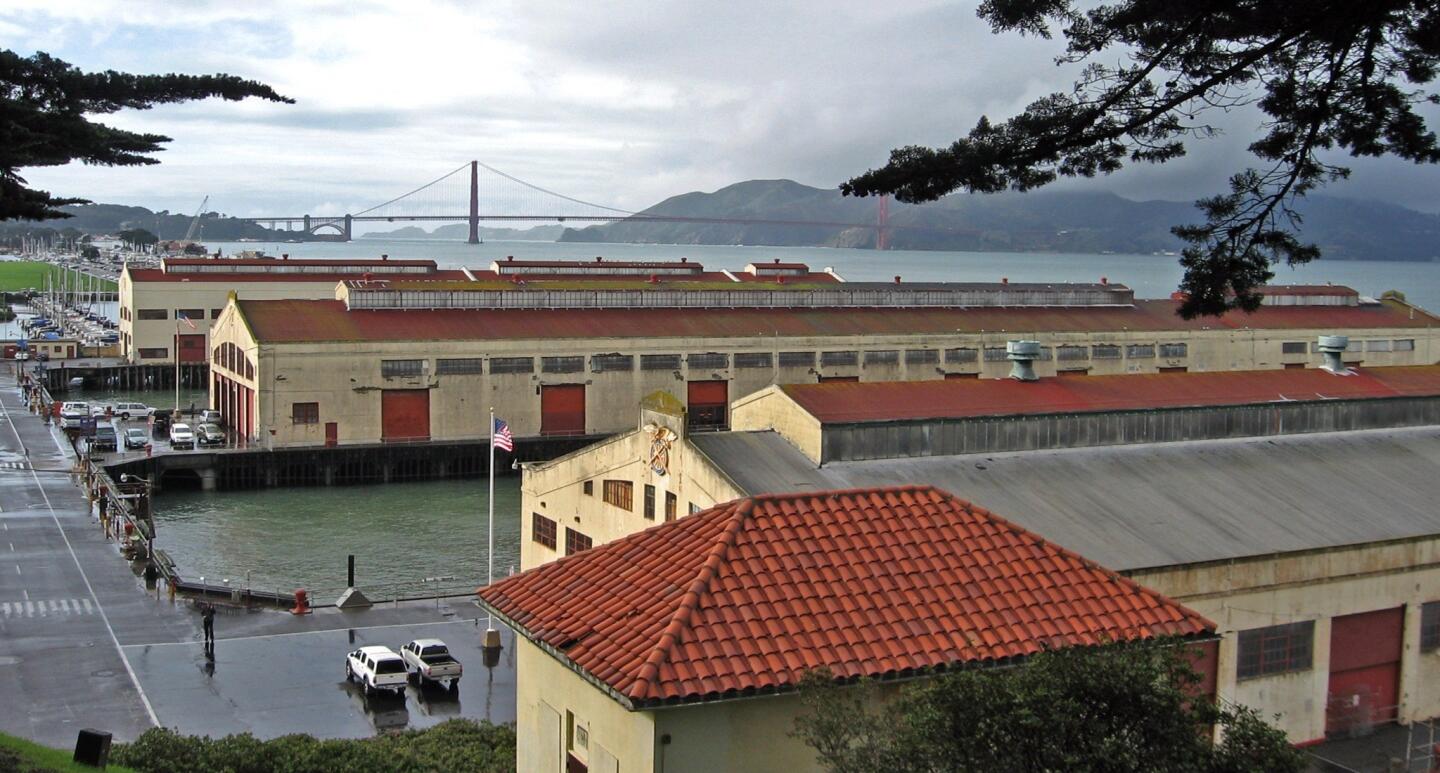
Fort Mason Center, http://www.fortmason.org, a complex of refurbished and repurposed military buildings, is home to small art galleries, museums, theaters and other arts groups, as well as restaurants and a bookstore. (Anne Harnagel / Los Angeles Times)
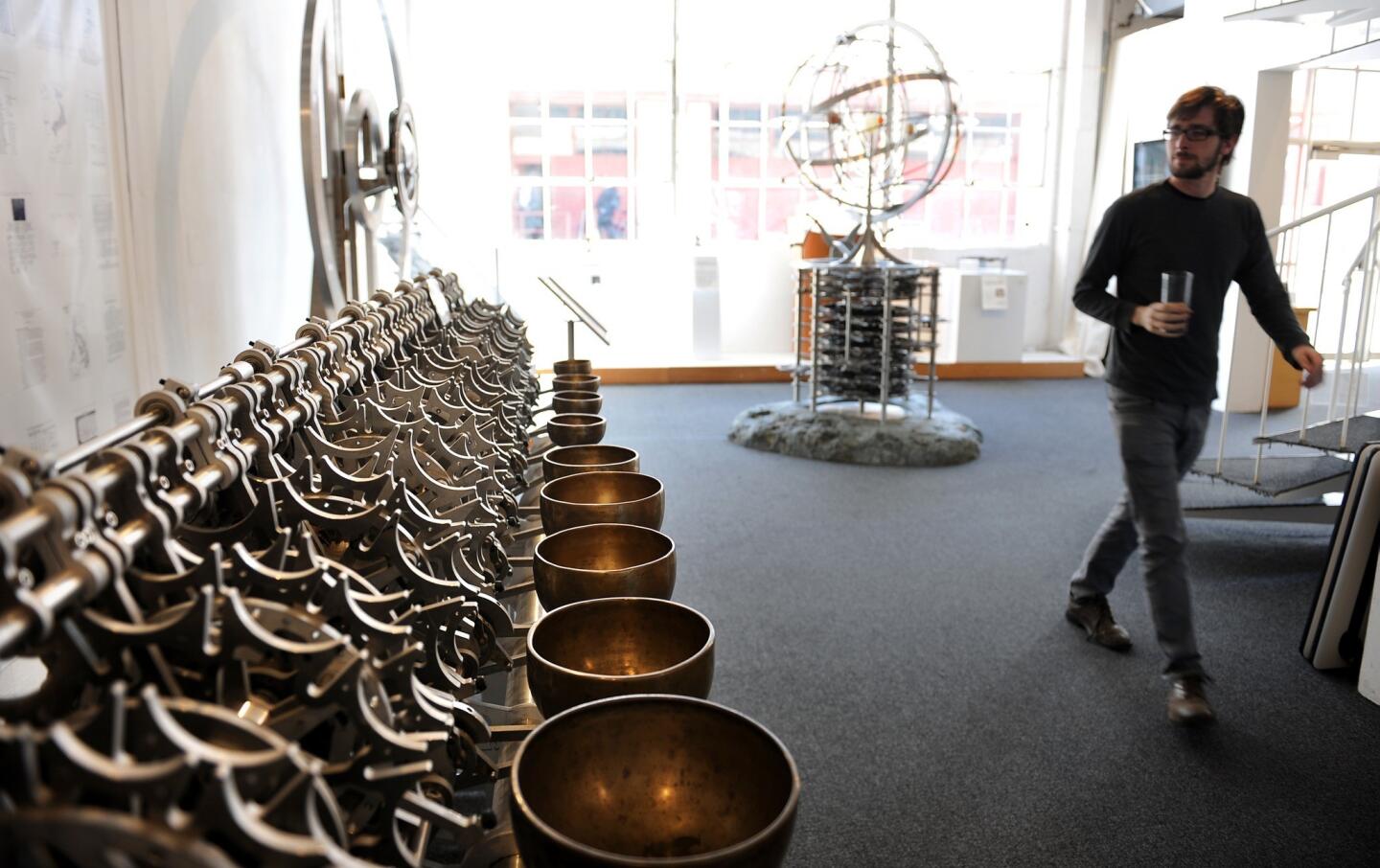
Folks fed up with our here-and-now society will find inspiration at the Long Now Museum and Store. It’s run by the Long Now Foundation, which seeks “to provide a counterpoint to today’s accelerating culture” and “foster long-term thinking.” On display are large, sculptural 1/4-scale prototypes of pieces of its 10,000-year clock being built on West Texas land owned by Amazon founder Jeff Bezos. Building A; (415) 561-6582, http://www.longnow.com. Open 10:30 a.m.-5 p.m. Mondays-Fridays, 11 a.m.-6 p.m. Saturdays and Sundays. Free. (Wally Skalij / Los Angeles Times)
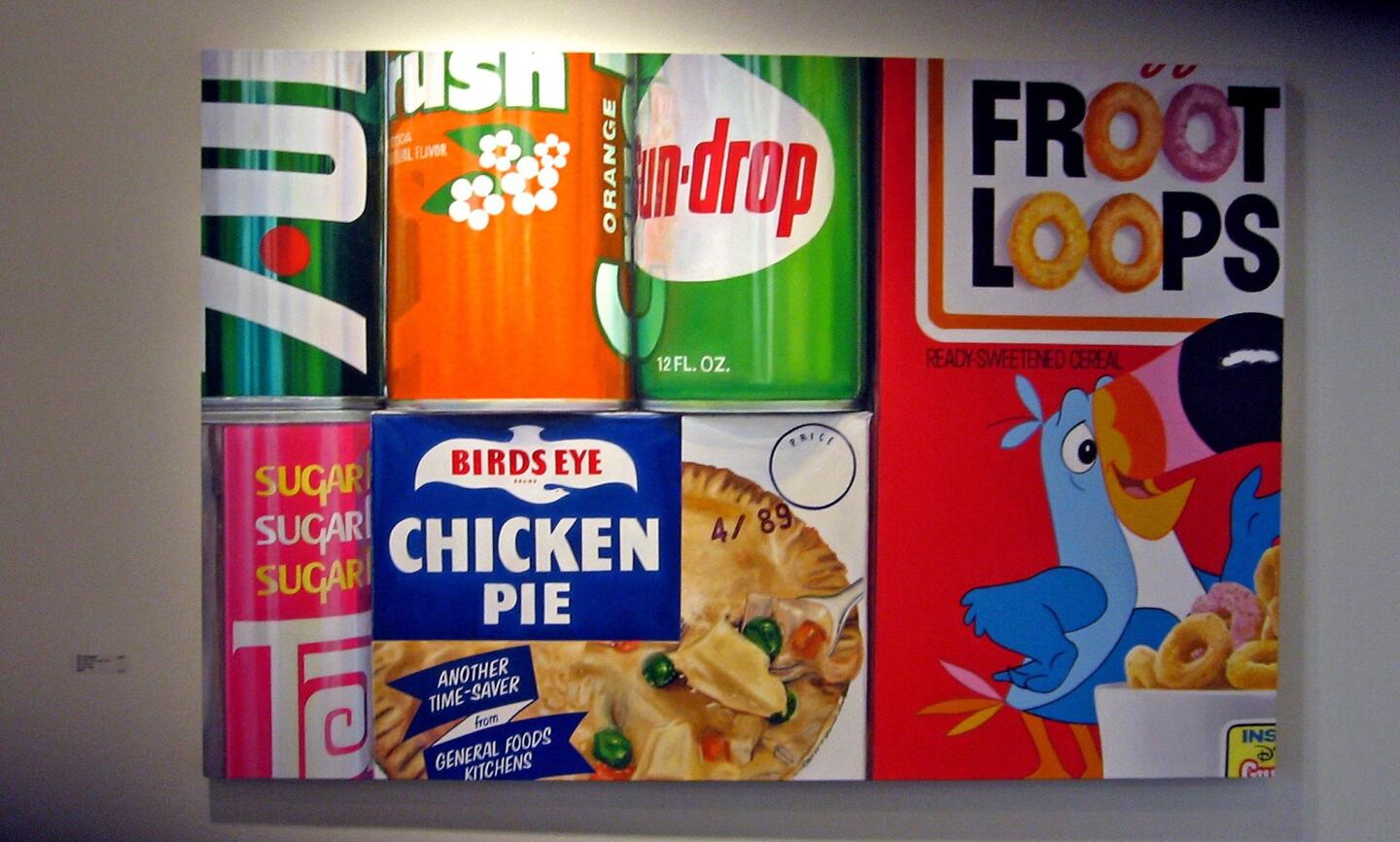
The SFMOMA Artists Gallery, an offshoot of the San Francisco Museum of Modern Art, skips the Warhols and Picassos in favor of upcoming and established Bay Area artists whose works are offered for sale or rent. Proceeds benefit the artists as well as support the museum’s exhibitions and programming. Building A; (415) 441-4777, http://www.sfmoma.org/visit/artists_gallery. Open 10:30 a.m.-5 p.m. Tuesdays-Saturdays. Free.
Pictured: “Sun Drop Froot Loops,” by Terry Thompson, on display at the SFMOMA Artists Gallery. (Anne Harnagel / Los Angeles Times)
Advertisement
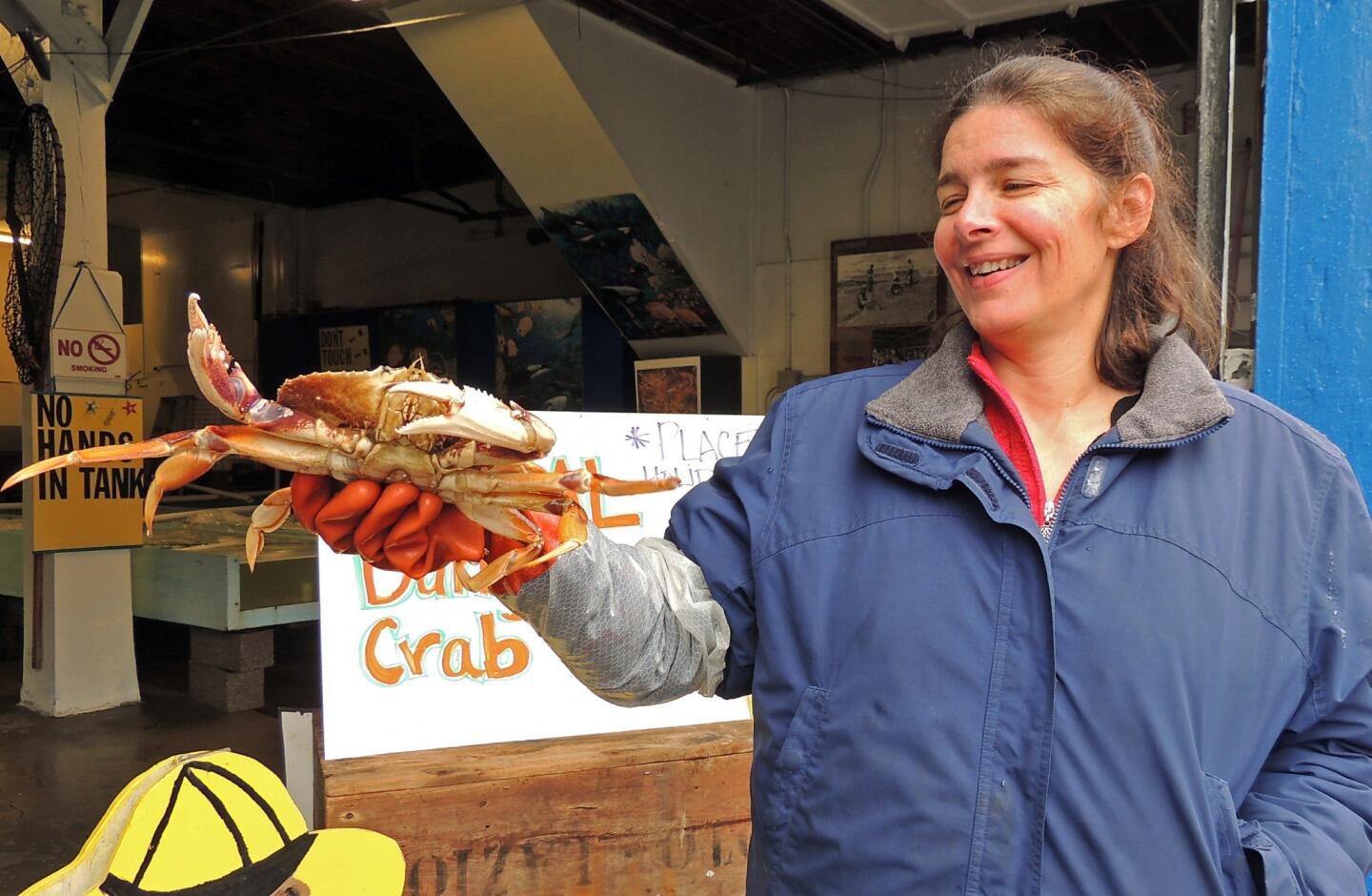
Exploring a city can be an expensive pastime. But not with City Guides. This nonprofit organization celebrates San Francisco by offering scores of free walking tours each week to help you discover the landmarks, legends and lore of the city. I tried the Fisherman’s Wharf tour with Bethel Watt, one of 300 volunteer guides, and enjoyed two hours of behind-the-scenes revelations about this world-famous destination. Several different tours are offered daily, even in winter, covering various parts of the city. Most last 90 minutes to two hours. http://www.sfcityguides.org. (Rosemary McClure / For the Times)
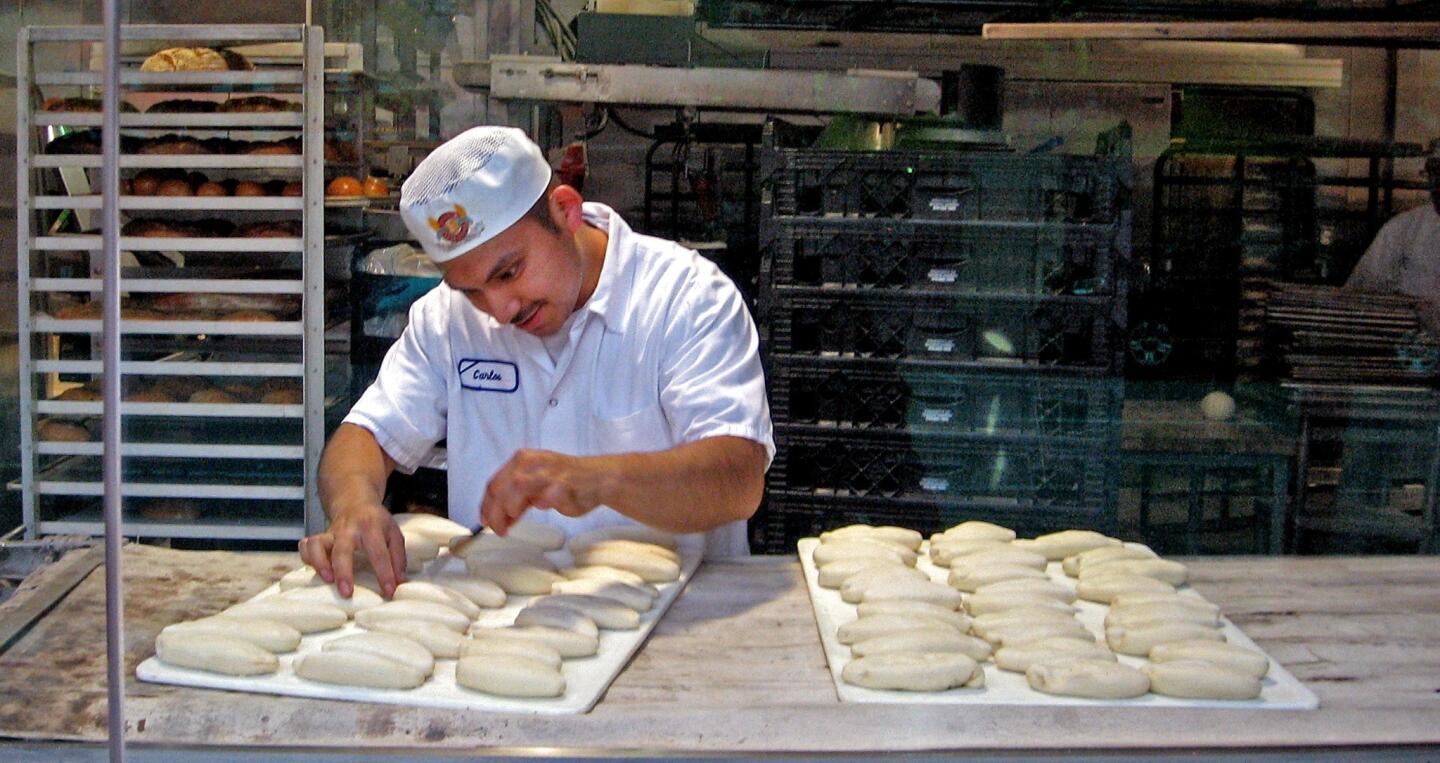
Passersby can stop and gaze through the street-level plate-glass windows of the demonstration bakery, but bread buffs will head upstairs to a gem of a small museum that recounts the Boudin Bakery history, which dates to 1849 and its founding in San Francisco. Check out the whimsical mobiles made with bread loaves shaped like sea critters, then watch the dough “dump” and the hundreds of loaves roll past on the conveyor belt. Stop first for a bite to eat (shrimp salad sandwich on a baguette, $9) at the Boudin Bakery Cafe on the ground level and get $1 off the $3 museum admission. 160 Jefferson St.; (415) 928-1849, http://www.boudinbakery.com. (Anne Harnagel / Los Angeles Times)
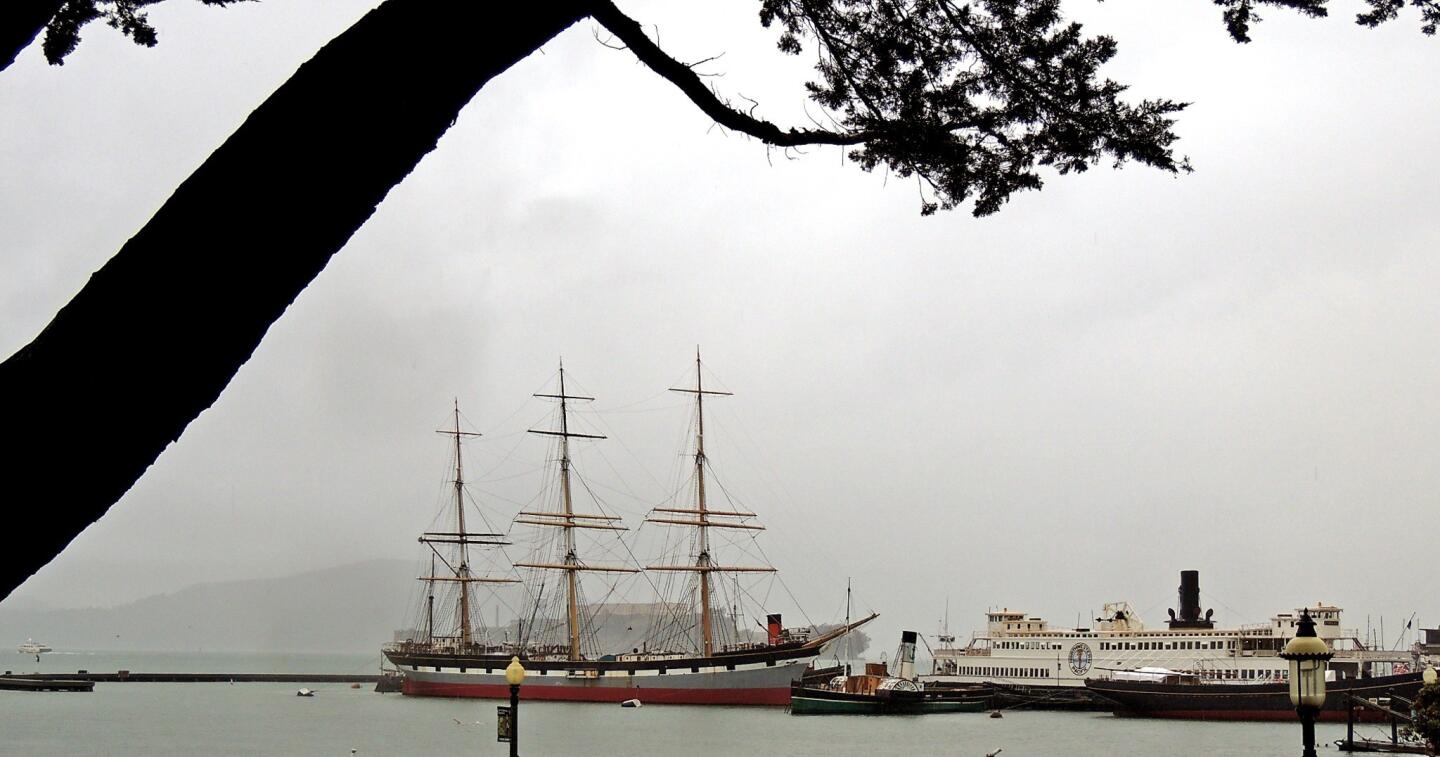
Ahoy, matey. Check out the fleet of historic vessels at Hyde Street Pier, near the Powell and Hyde streets cable-car turnaround. Visit the tall ship Balclutha, an 1886 square-rigger that rounded Cape Horn 17 times, and the Eureka, an 1890 steam ferry boat. Even if you don’t want to tour the boats ($5 adults, free for supervised children under 16), the views of the bay and Golden Gate Bridge are phenomenal. (415) 561-7169, http://www.nps.gov/safr/historyculture/historic-vessels.htm. (Rosemary McClure / For the Times)
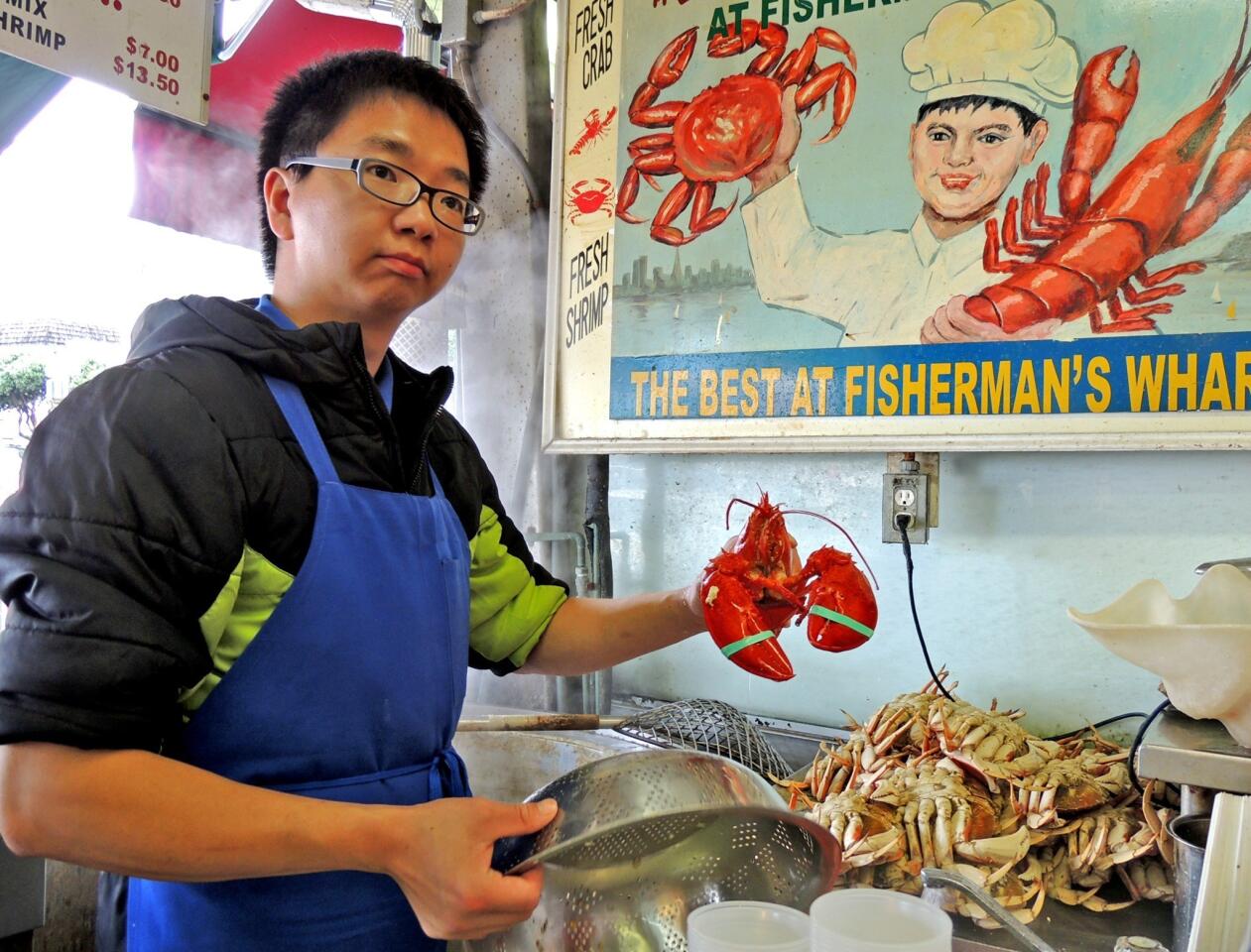
Looking for an inexpensive Fisherman’s Wharf lunch? Try the chowder-in-a-sourdough-bread-bowl ($5.75) or sidewalk seafood cocktails ($4.75-$9) sold outside the pricey tourist restaurants. Avoid the overhead by ordering at the counter and taking a stroll through the inner or outer lagoons of Fisherman’s Wharf, where you can sit on a bench and see docked fishing boats; one of them may have caught your lunch that morning. (Rosemary McClure / For the Times)
Advertisement
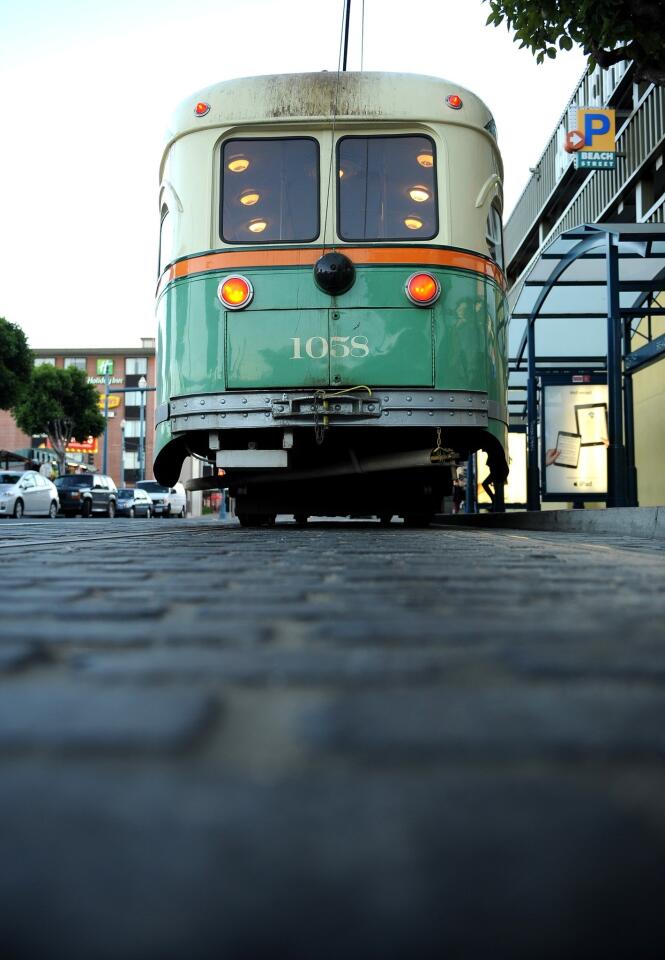
Tourists queue up in long lines to ride San Francisco’s famous cable cars without realizing they can jump aboard another fun form of transportation: a historic trolley. The city’s streetcars, nicknamed museums-in-motion, are vintage trolleys imported from around the world. Along with the cable cars, they form a steel triangle of tourist-friendly rails that deliver riders to Fisherman’s Wharf, Union Square, Chinatown, Coit Tower and other famous locales. Fare: $2 adults, 75 cents for youth and seniors. Info: http://www.streetcar.org/museums-in-motion. (Wally Skalij / Los Angeles Times)
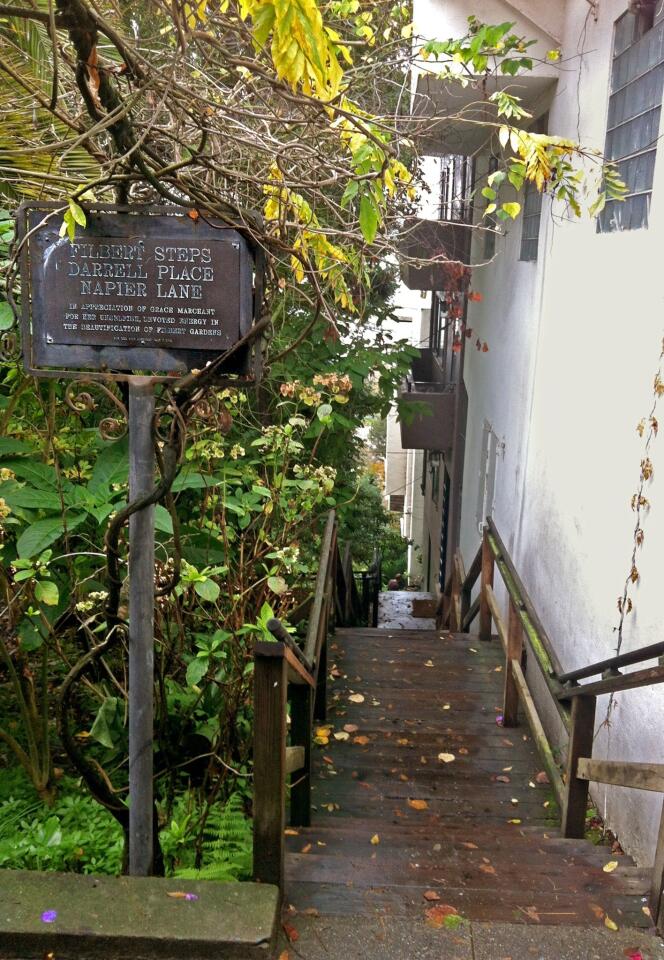
Three stunning segments of steps soar from Sansome Street to Coit Tower. Take your time, and on either side of the rustic wooden stairs you’ll see gorgeous homes -- many Art Deco -- with lovely gardens. At the top take in stunning city views and wander the perimeter of 210-foot-tall Coit Tower, with its murals from the 1930s, or ride an elevator to the top for a bird’s-eye view of the city. From the bottom, it’s a 15-minute walk to the Embarcadero. (Jessica Gelt / Los Angeles Times)
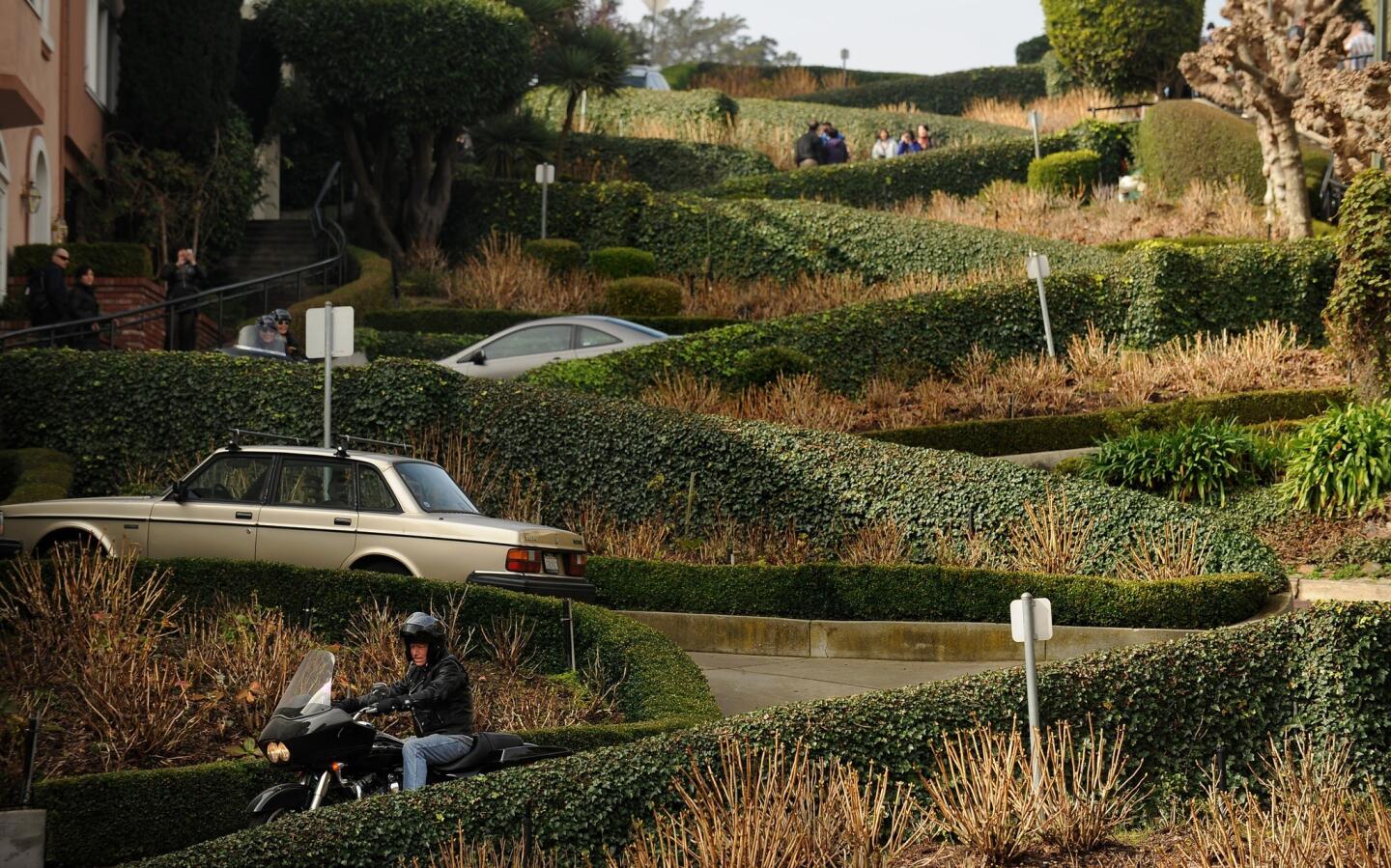
This famously curvy hillside block of Lombard Street (between Hyde and Leavenworth streets) is better for walkers than drivers. Either hike up Russian Hill or arrive by the Powell/Hyde cable car line (www.sfmta.com/cms/mfleet/cablecar.htm). That way, you can linger and enjoy the views down Hyde to Alcatraz and down Lombard to Coit Tower, and you need not scramble for parking. And it’s fun to hear the chorus of foreign languages as tourists hop off the cable car and make their way down the winding street. From the bottom of the hill, it’s an easy stroll to Washington Square. (Wally Skalij / Los Angeles Times)
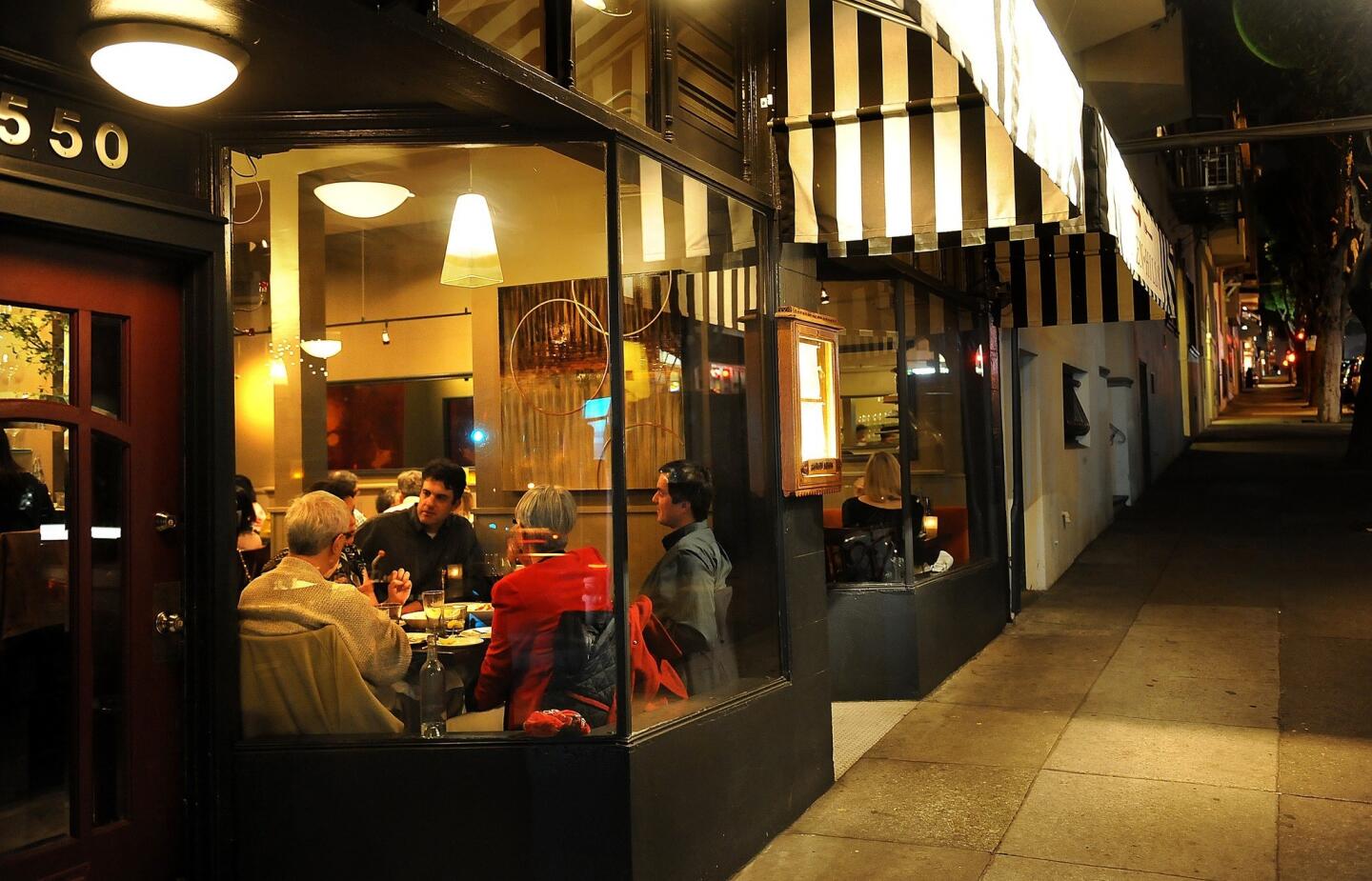
Owner-chef Alexander Alioto, scion of one of San Francisco’s noted political and culinary families, opened this cozy (just 38 seats) storefront restaurant in 2010. A starter of Parmigiano-Reggiano chips ($4), drizzled with 20-year-old balsamic, took the edge off while waiting at the even tinier bar. The house-made tortelli with wild mushrooms ($21), sauced with brown butter and thyme, were light and silky, but left me lusting after my neighbor’s country-style pork chop with duck fat-roasted potatoes ($27). 1550 Hyde St.; (415) 775-1550, http://www.sevenhillssf.com. Open 5:30-9:30 p.m. Tuesday-Thursdays and Sundays, 5:30-10 p.m. Fridays and Saturdays. Reservations a must. (Wally Skalij / Los Angeles Times)
Advertisement
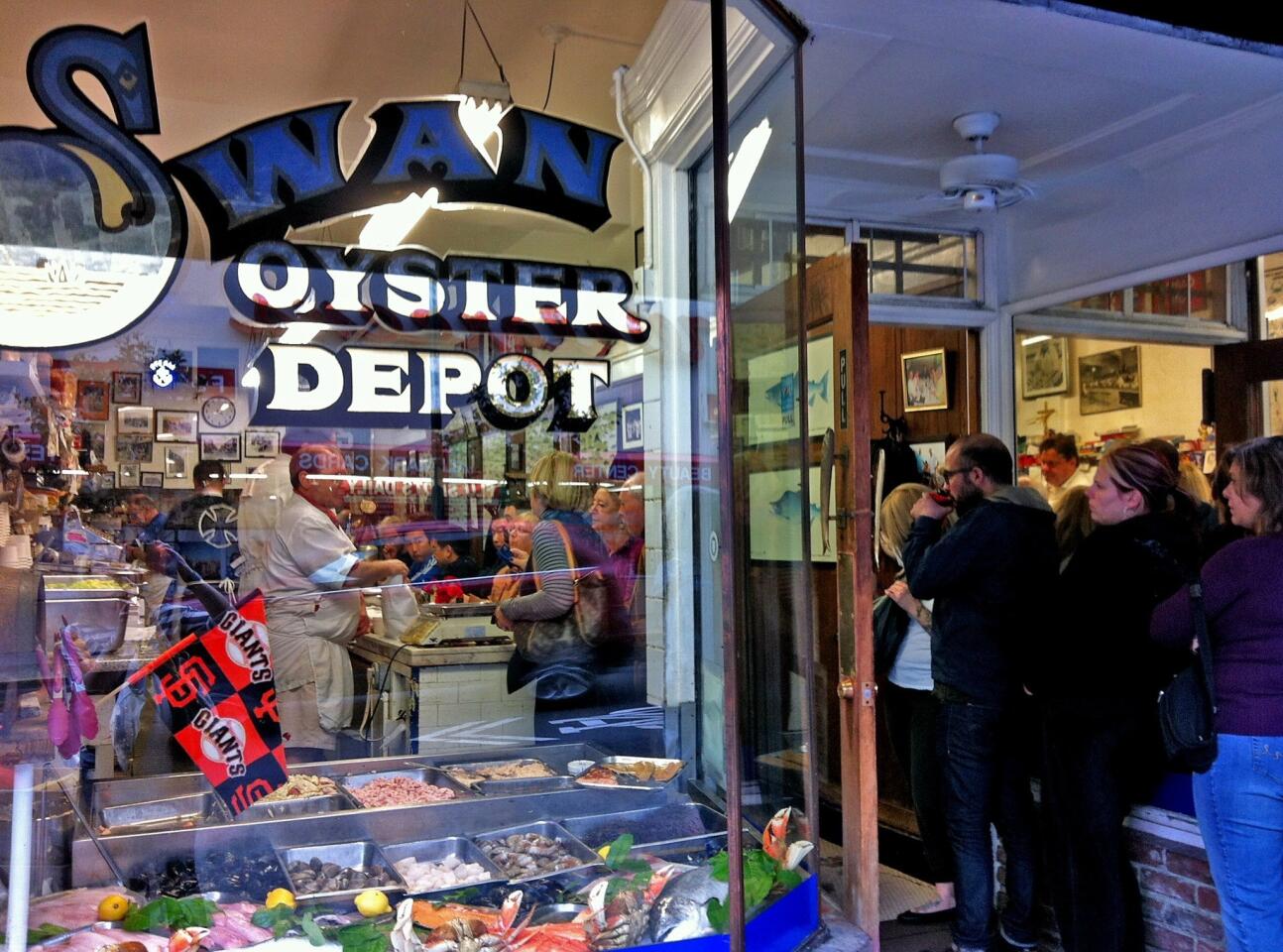
Open for more than 100 years, this seafood shack nabbed top Bay Area seafood honors in a Zagat survey last year. The narrow room has only counter seating and is rarely without a line out its doors. Snag a seat and order from a wall menu of fresh oysters, clams and clam chowder as well as shrimp, prawn, crab and lobster seafood salads and cocktails. Meals come with a hunk of chewy sourdough bread and butter and are best consumed with a glass of cold, crisp white wine. The family-run business boasts some of the friendliest service in the city. Most items $10-$20. 1517 Polk St.; (415) 673-1101. (Jessica Gelt / Los Angeles Times)
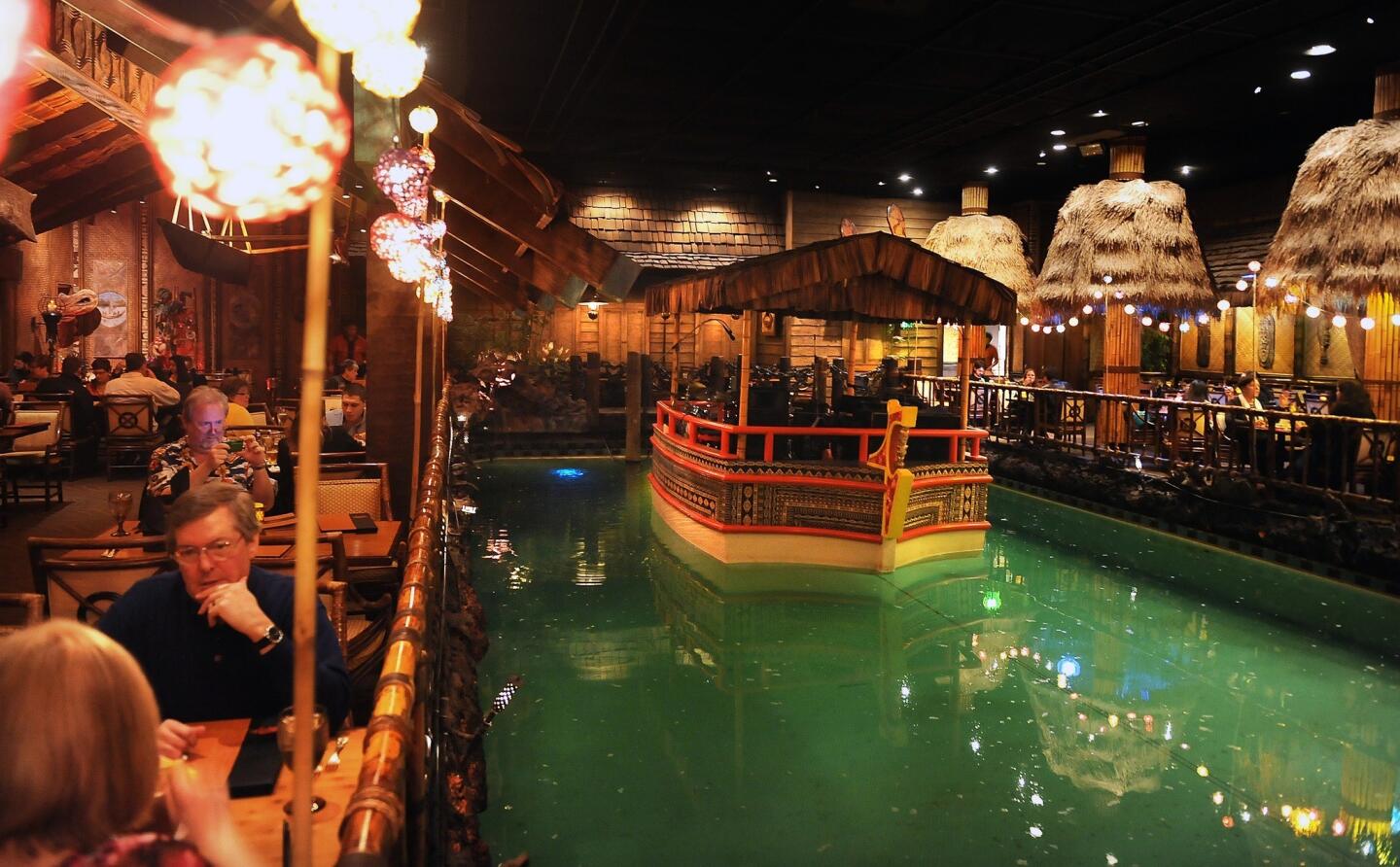
A mid-20th century icon of tiki style, the Tonga Room is in the historic Fairmont Hotel atop Nob Hill. Its lagoon — the hotel’s former basement swimming pool — sports a floating stage where bands perform amid faux rainstorms. Patrons nosh on Pacific Rim fare such as Mongolian beef, Singapore noodles and orange chicken. Tiki drinks are elaborate, brightly colored and deadly strong. Happy hour (5-7 p.m. Wednesdays-Fridays) is a great time to visit. $19-$36. 950 Mason St.; (415) 772-5278, http://www.tongaroom.com. (Wally Skalij / Los Angeles Times)
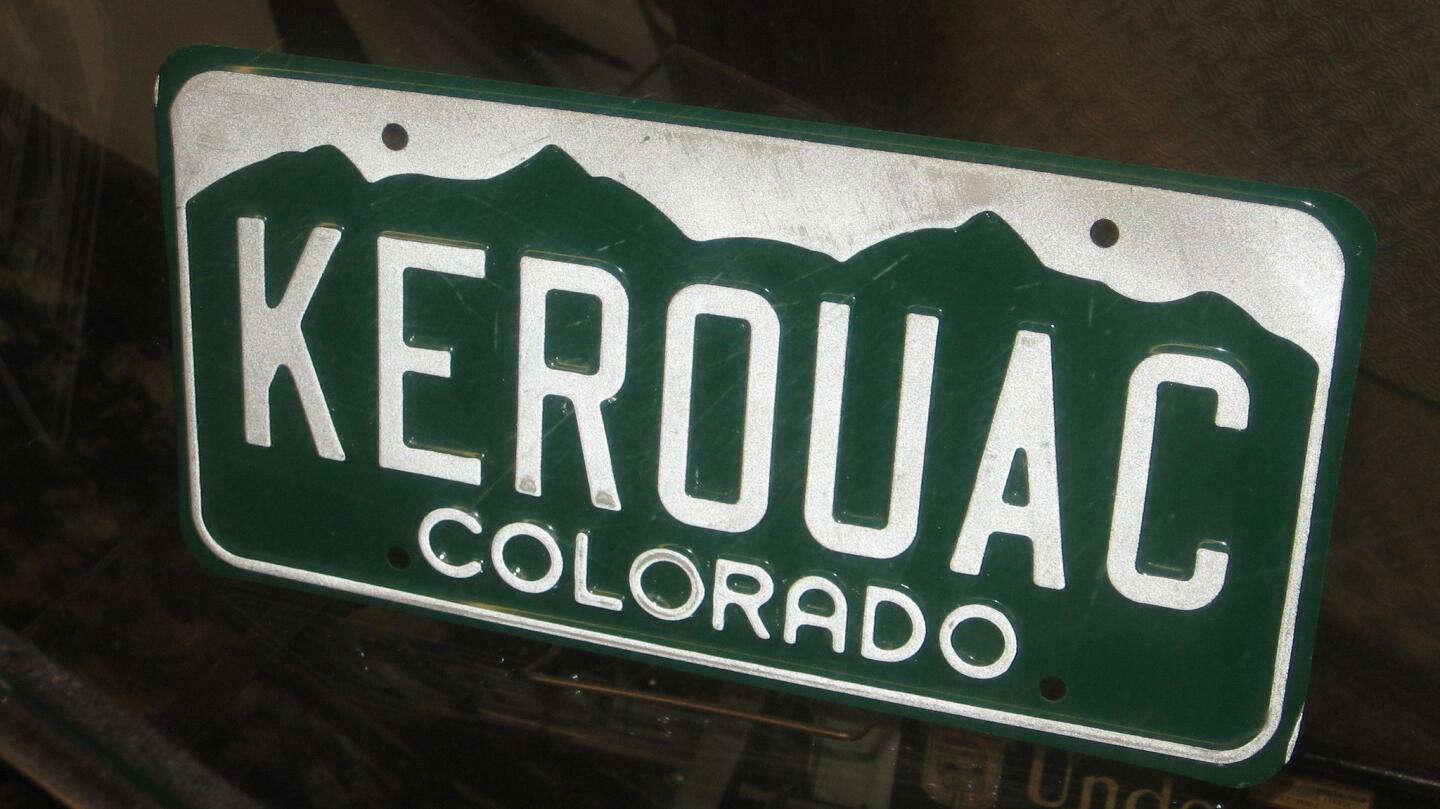
Eight bucks gets you into this small museum stashed in a used book and record store. It pays homage to Neal Cassady, Jack Kerouac, Allen Ginsberg and other Beat Generation luminaries with homemade displays and cracked glass cases packed with books, manuscripts, photos and other ephemera, as well as the odd license plate and brown and tan plaid jacket worn by Kerouac. A new addition is the 1949 Hudson, still dusty and dirty, used in the recent “On the Road” movie. 540 Broadway; (800) 537-6822, http://www.kerouac.com 10 a.m.-7 p.m daily, except Christmas and New Year’s. Adults $8, students $5. (Anne Harnagel / Los Angeles Times)
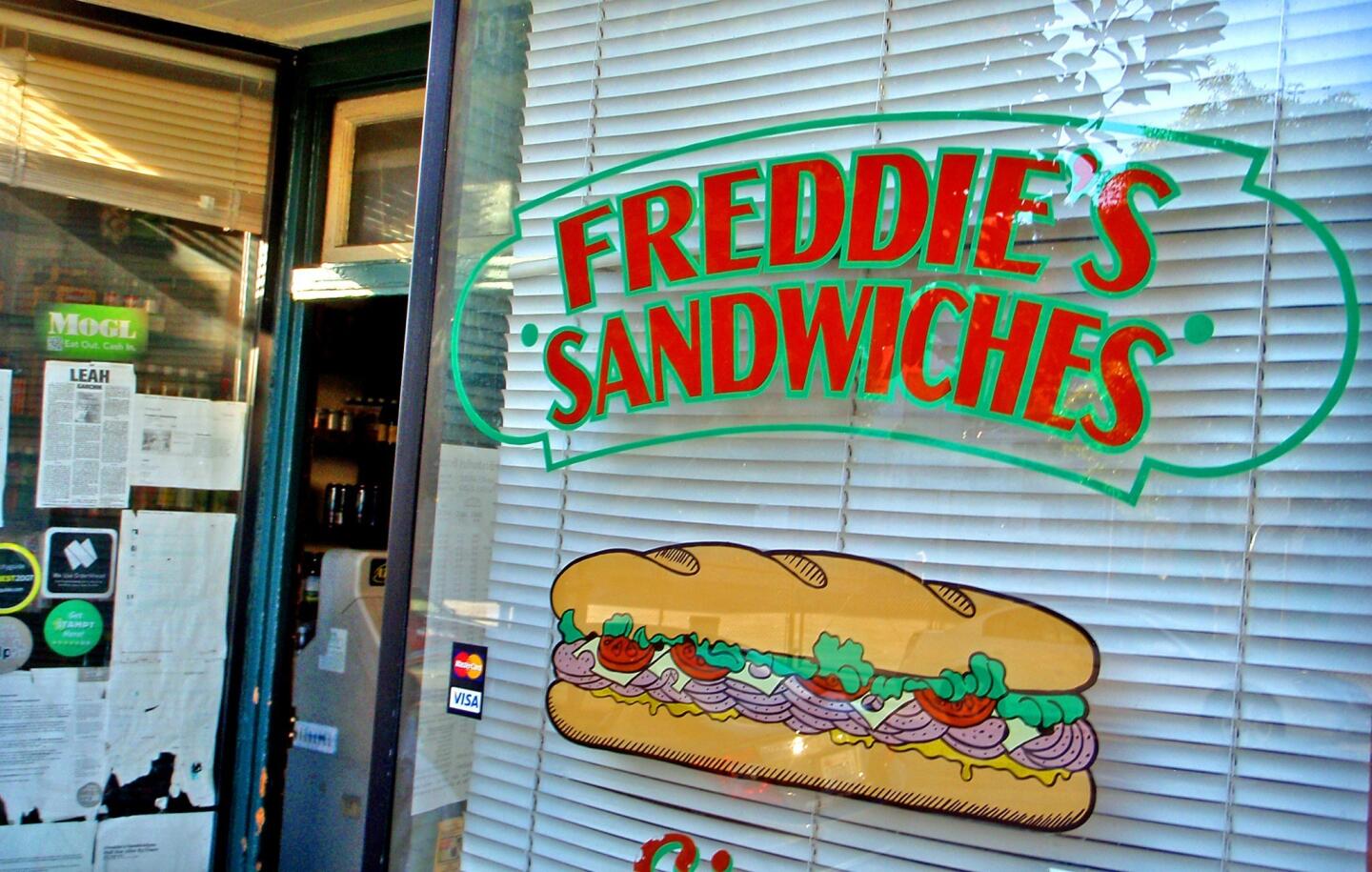
Little neighborhood sandwich shop in North Beach has been drawing locals since 1926. Choice of breads, but the most popular is the soft sourdough. At $5.95, the Italian combo might be the best deal in town. Even the 6-inch can serve two. No ambience and limited seating, so grab lunch and head to the water. Sandwiches $6 and up. If heaven had a deli.... 300 Francisco St.; (415) 433-2882. (Chris Erskine / Los Angeles Times)
Advertisement
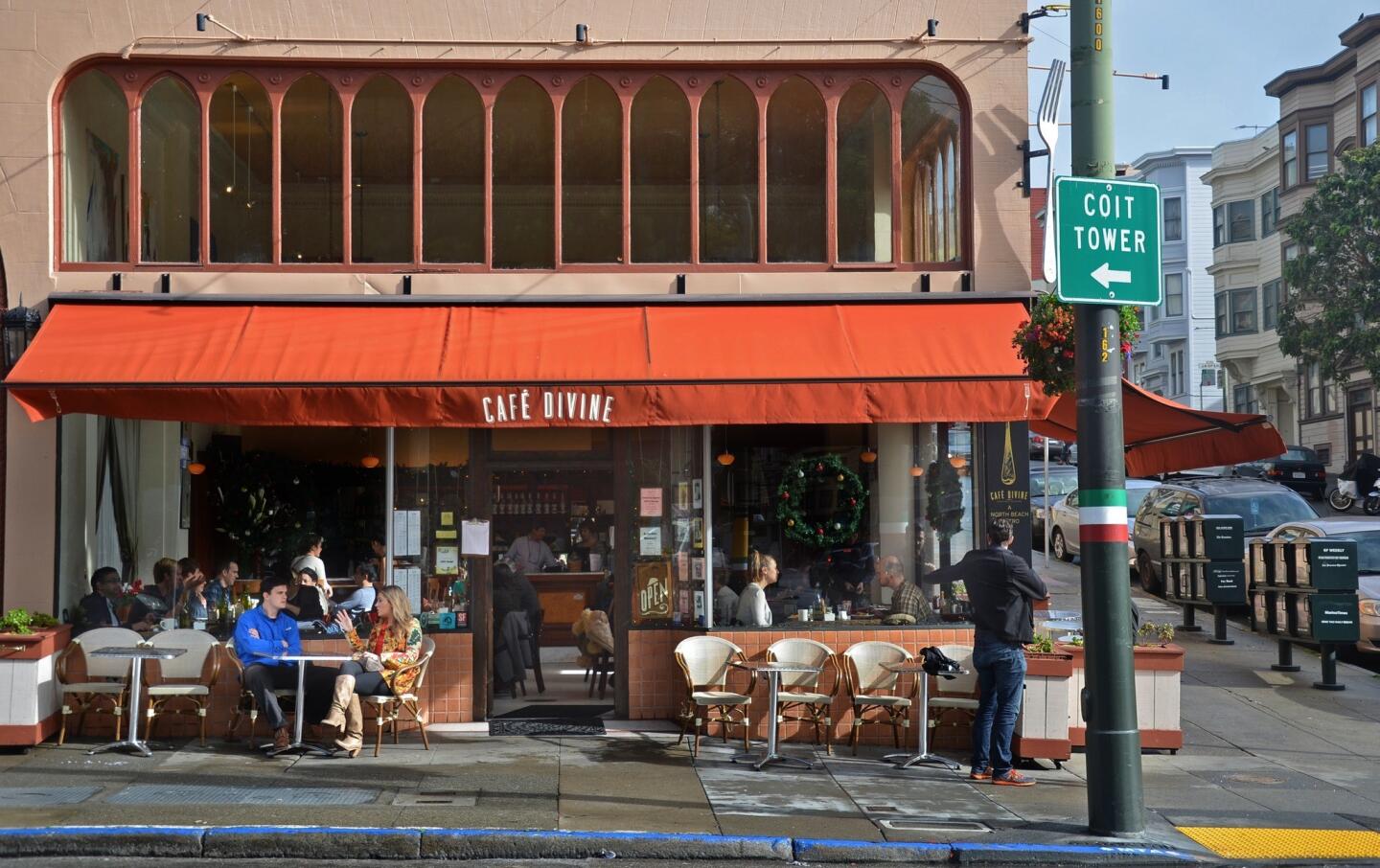
This spot has a tremendous location facing Washington Square Park and a great, airy feel. (It’s also a good fallback if the breakfast/lunch line is too long at Mama’s, a block away.) Sidewalk tables. Frequent live music, including accordion Mondays. Breakfast, lunch and dinner, with dinner entrees about $13-$20. 1600 Stockton St.; (415) 986-3414, http://www.cafedivinesf.com. (Christopher Reynolds / Los Angeles Times)
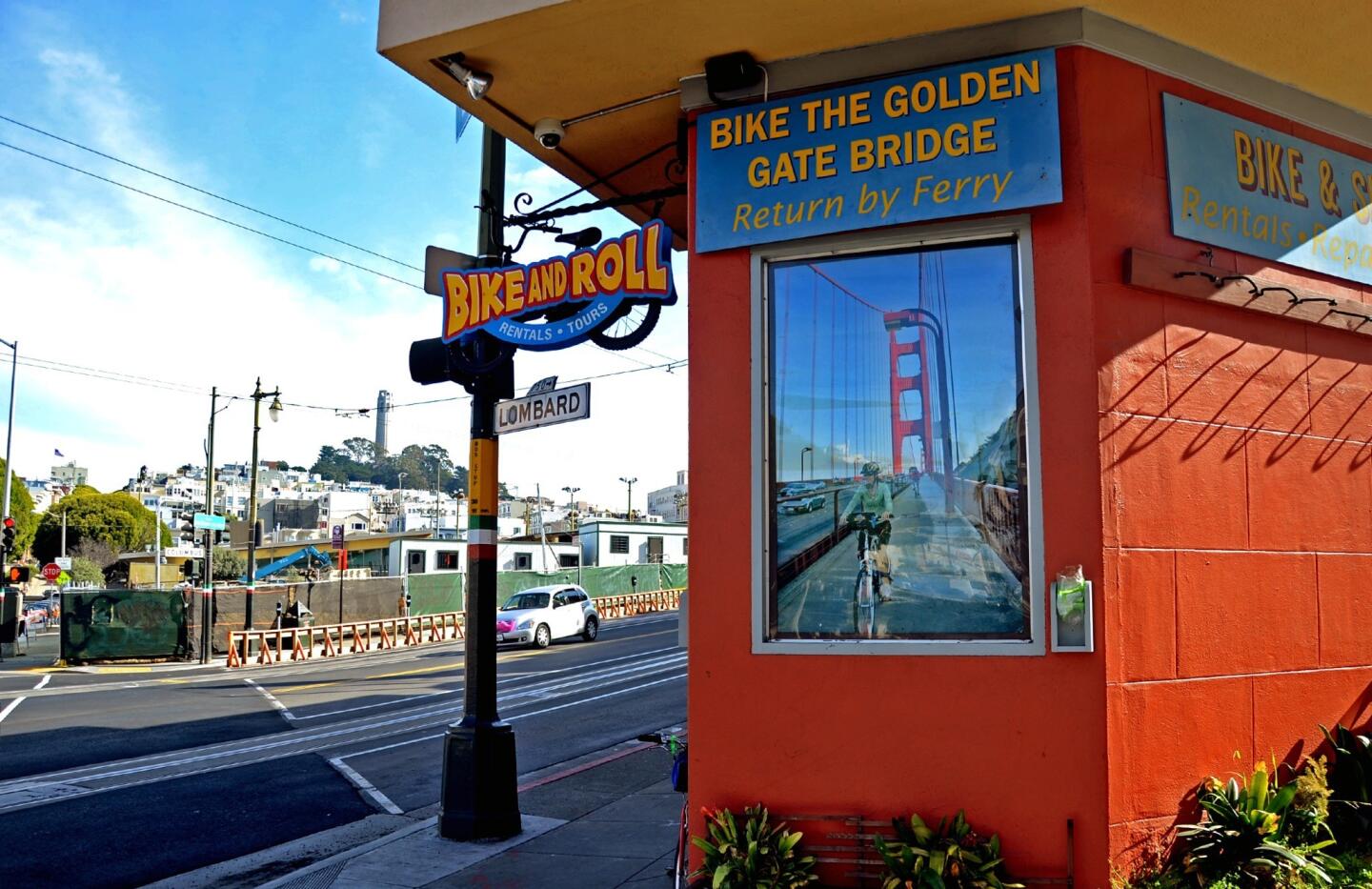
Want to cover the waterfront or the Golden Gate on two wheels? You’ll find the Bike Rental District (that’s our nickname, not theirs) near the foot of Lombard Street. On this short stretch of Columbus Avenue, near the Joe DiMaggio Playground and North Beach Pool, three bike rental places compete: Bike & Roll San Francisco (899 Columbus Ave.; [415] 229-2000, http://www.bikethegoldengate.com); Columbus Cyclery (801 Columbus Ave.; [415] 561-9999, http://www.gobikeit.com) and Dylan’s Tours (782 Columbus Ave.; [415] 932-6993, http://www.dylanstours.com). (Christopher Reynolds / Los Angeles Times)
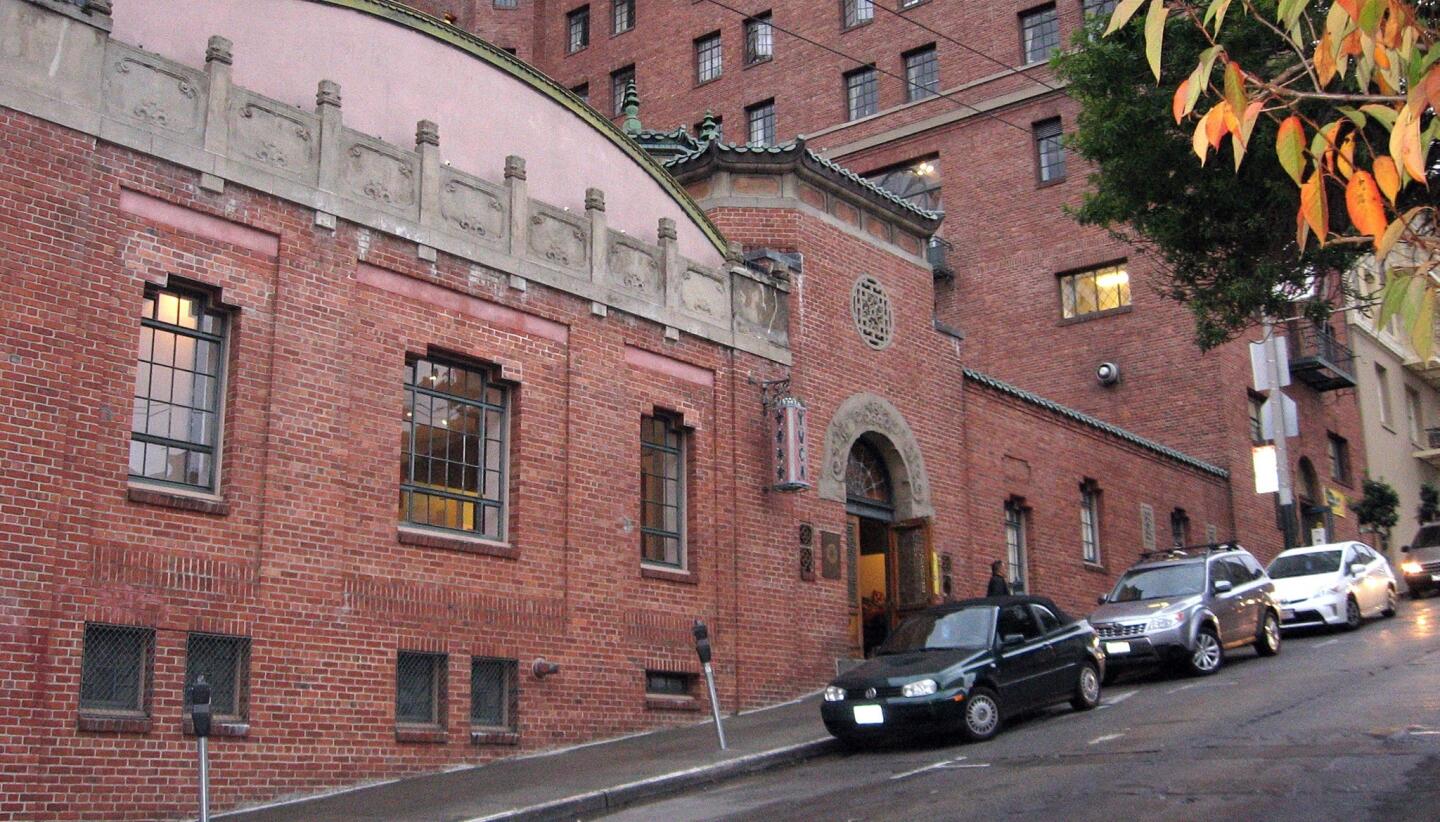
Designed by architect Julia Morgan, this sturdy brick building opened in 1932 as the Chinese Young Women’s Christian Assn. Exhibits in the main gallery, the YWCA’s gymnasium, recount the role of the Chinese in the history of San Francisco and the nation. Among the poignant displays is a small suitcase containing an immigrant’s meager possessions: a hat, parasol, pipe, comb and chopsticks. 965 Clay St.; (415) 391-1188, http://www.chsa.org. Open noon to 5 p.m. Tuesdays-Fridays, 11 a.m.-4 p.m. Saturdays. Free first Thursday of the month. Adults $5, students/seniors $3, children ages 2-17 $2. (Anne Harnagel / Los Angeles Times)
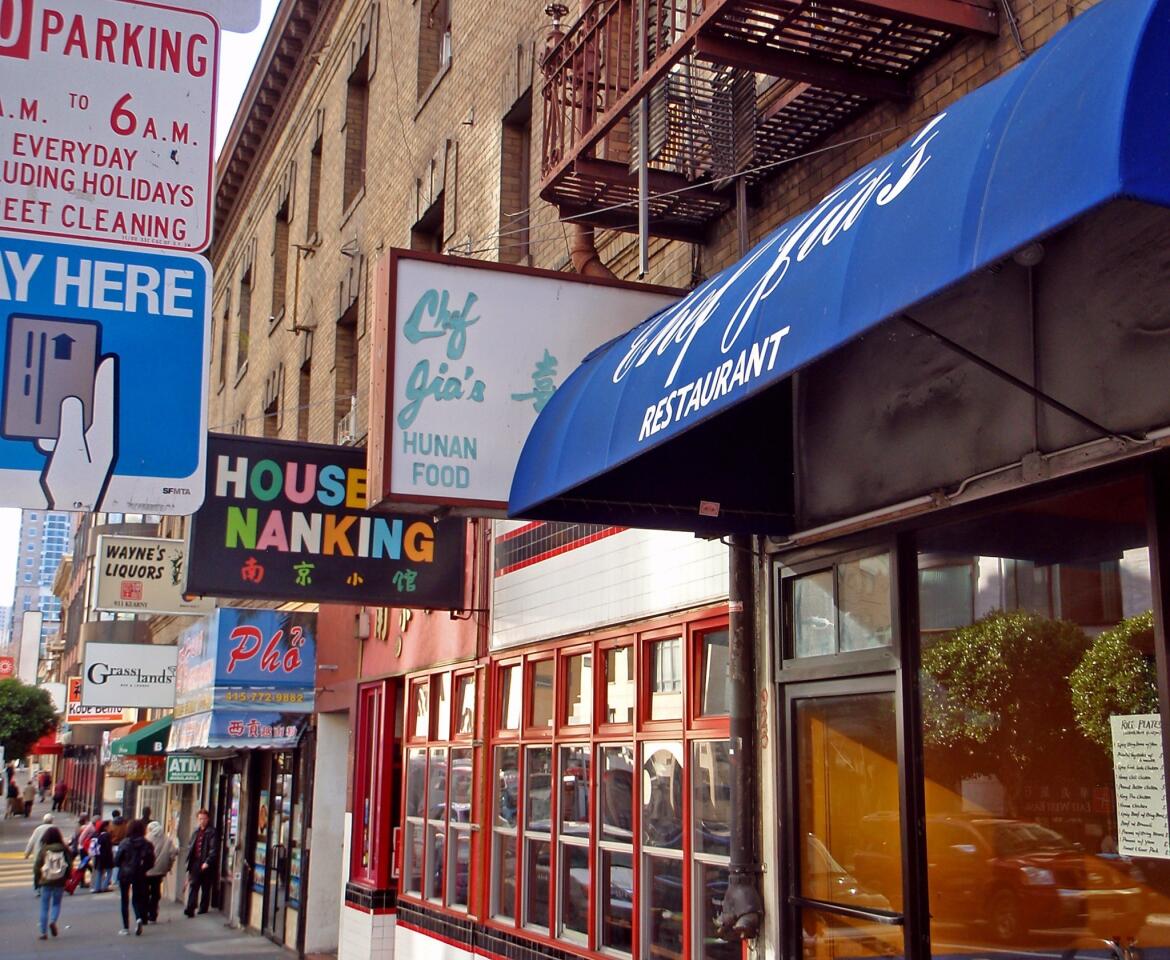
Let others wait in line at the more renowned, more expensive House of Nanking next door. Locals on a budget, or tourists with an eye for value, go to Chinatown for Chef Jia’s, where dishes are offered sauteed or deep fried. This nondescript joint has only a dozen tables, and much of the business is neighborhood carry-out. But among the scores of storefront spots lining competitive Kearny Street, this is a standout, mostly for the food’s freshness. Chicken dinners feature only breast meat. Try the honey chili chicken. And the five spices duck. From $6.95. 925 Kearny St.; (415) 398-1626. (Chris Erskine / Los Angeles Times)
Advertisement
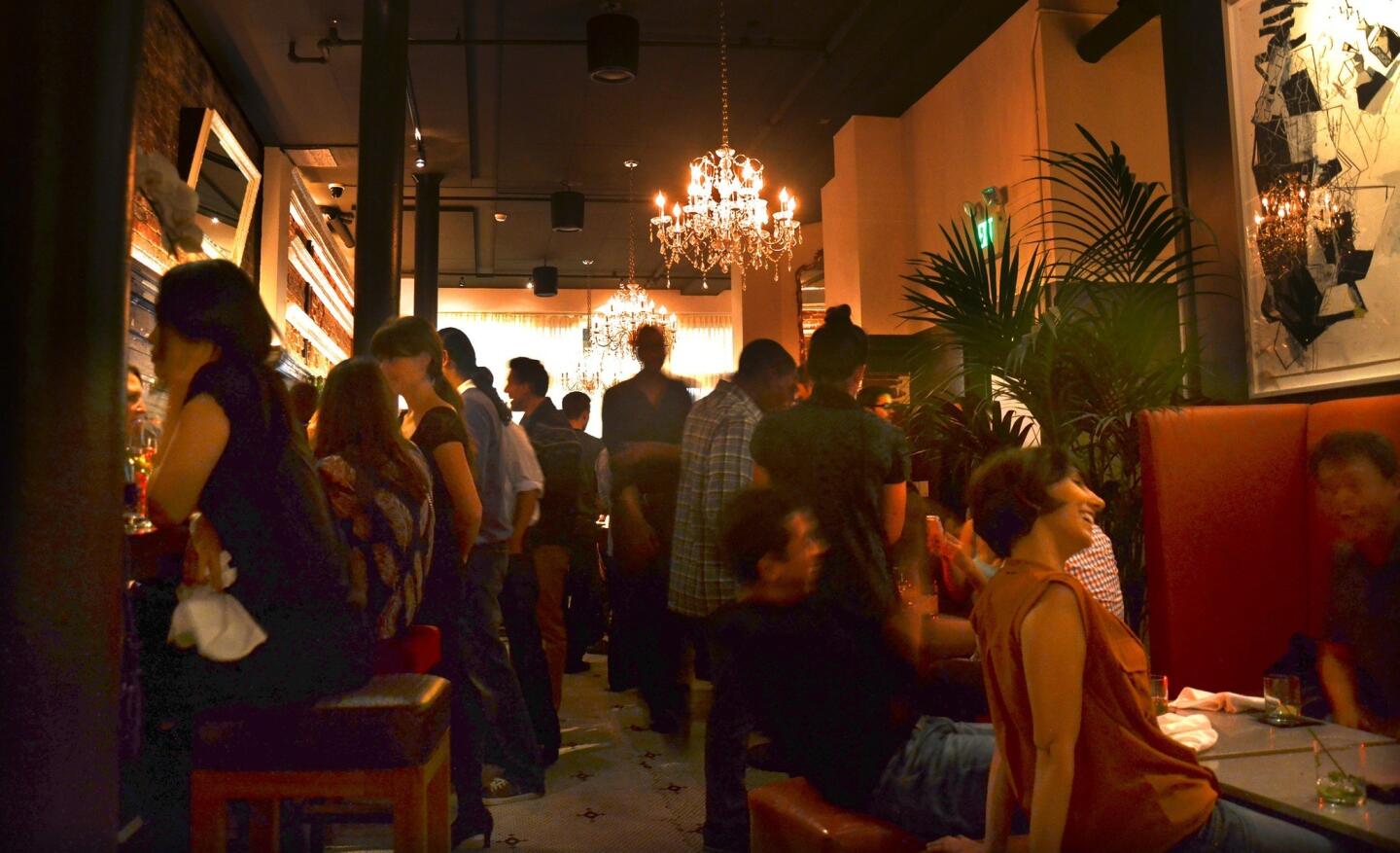
Inspired by film noir, this dining room and bar feature curtained booths and photos of old San Francisco. The bar gets loud. The restaurant stays pretty quiet (especially behind those booth curtains). Burritt Alley, just behind the tavern, is where Sam Spade’s partner gets gunned down in “The Maltese Falcon.” Owner-chef Charlie Palmer opened the restaurant in April 2012. The neighborhood is unlovely -- near Union Square, but on the gritty block just before Stockton Street becomes Stockton Tunnel. (Upstairs from the tavern is the Mystic Hotel, another 2012 venture of Palmer’s, 417 Stockton St.; (415) 400-0561, http://www.burritttavern.com. Dinner mains from $26. (Christopher Reynolds / Los Angeles Times)
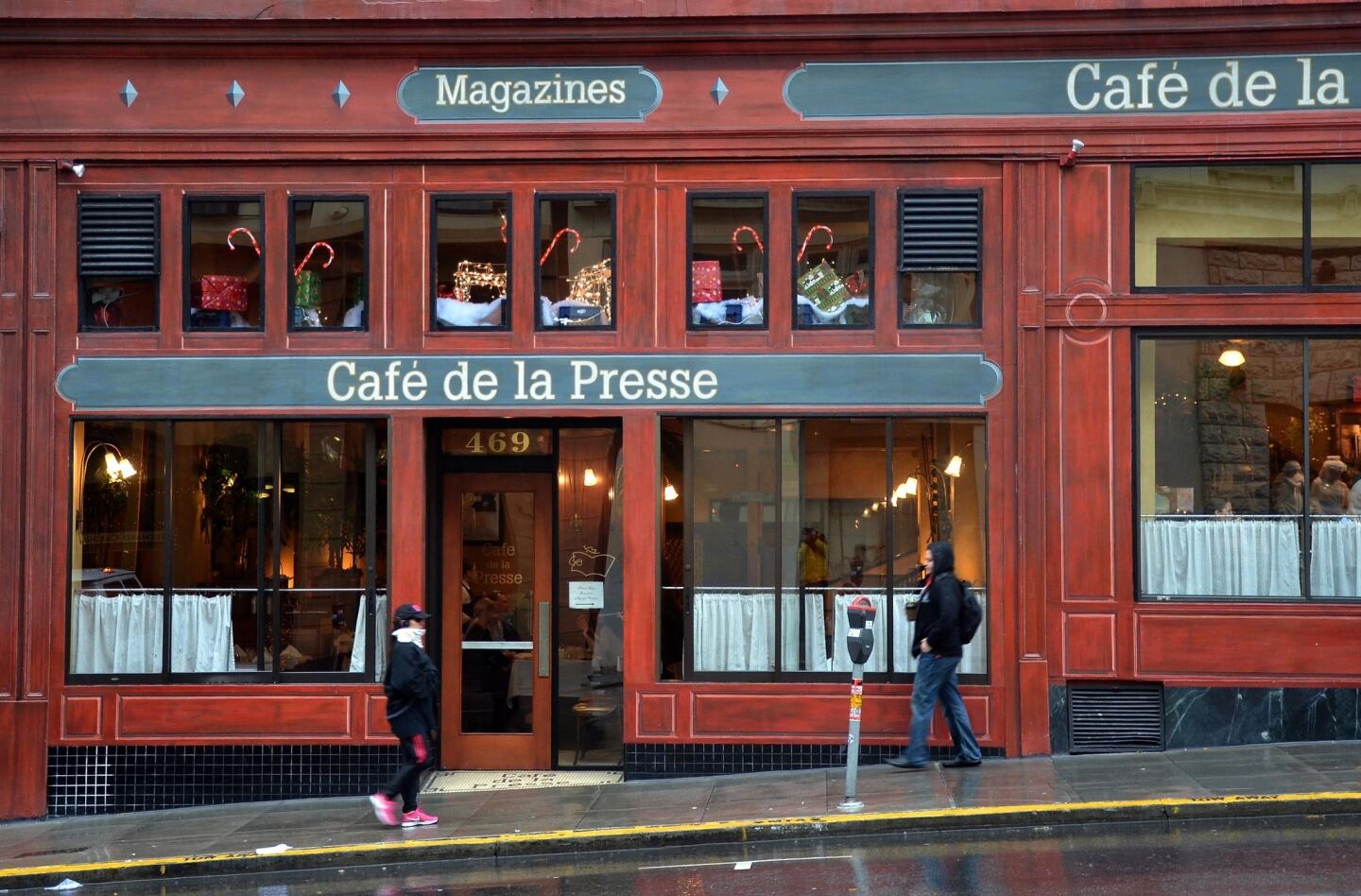
Across the street, Chinatown begins. Around the corner, Union Square beckons. Upstairs, the Hotel Triton ushers guests into rooms papered with Kerouac excerpts. And in this busy, casual cafe, you can scan the global newsstand, then settle in among a local/global crowd for a bistro-style meal. 352 Grant Ave.; (415) 398-2680, http://www.cafedelapresse.com. Dinners mains from $19. (Christopher Reynolds / Los Angeles Times)
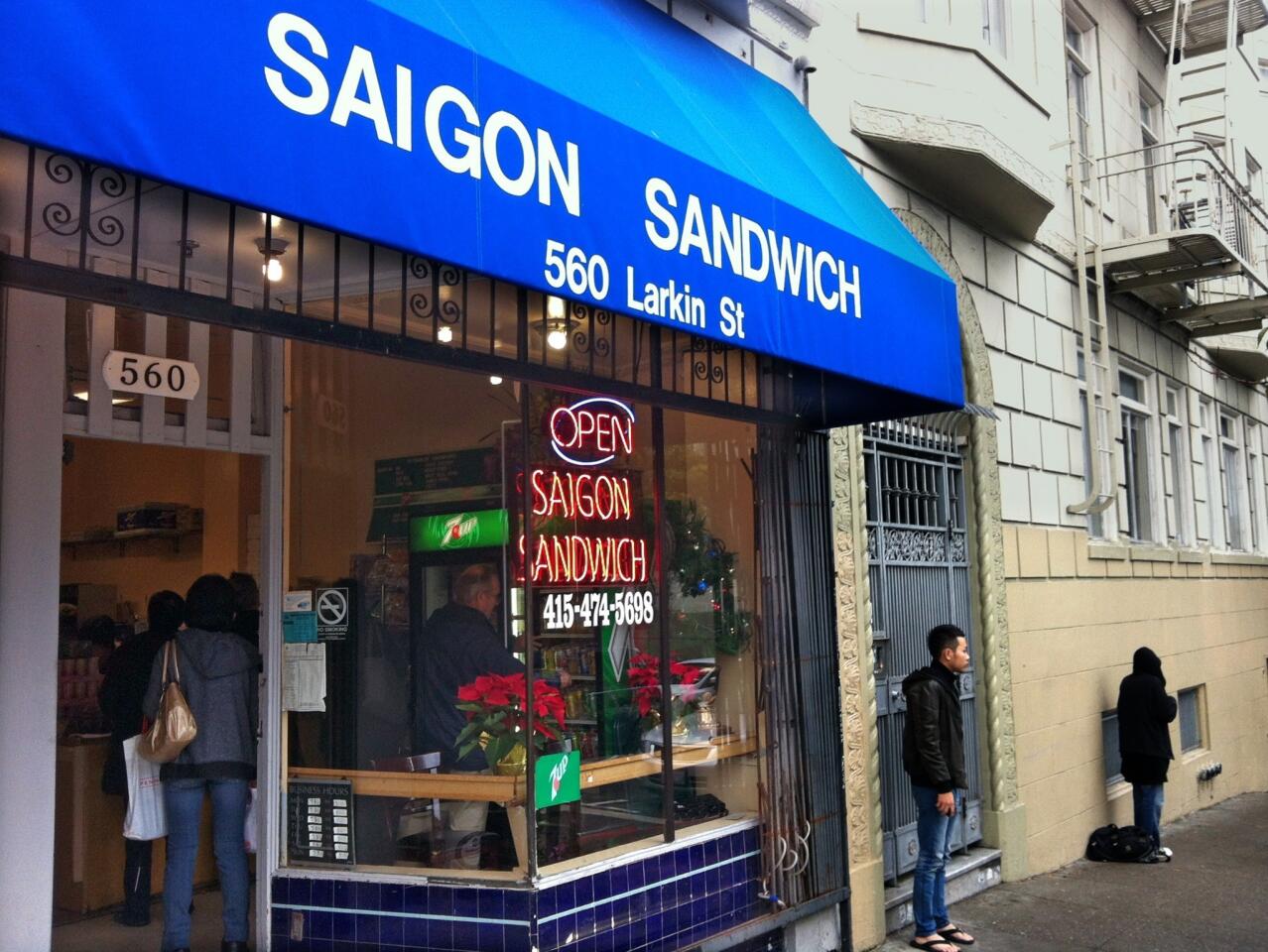
Banh mi lovers, rejoice. Saigon Sandwich is a tiny gem of a storefront along a gritty (but swiftly gentrifying) stretch of street in the Tenderloin that serves some of the best Vietnamese sandwiches in the city at rock-bottom prices. Step inside and order to go at the counter; there are only two seats at the front of the room. Choose roast chicken, roast pork, meatball pork or tofu, or opt for mixed roast pork and chicken pate -- a particularly decadent mouthful. Sandwiches come on a thick baguette, are slathered with tangy aioli and piled with cilantro, carrots and jalapeno peppers. $3.25-$3.75. 560 Larkin St.; (415) 474-5698. (Jessica Gelt / Los Angeles Times)
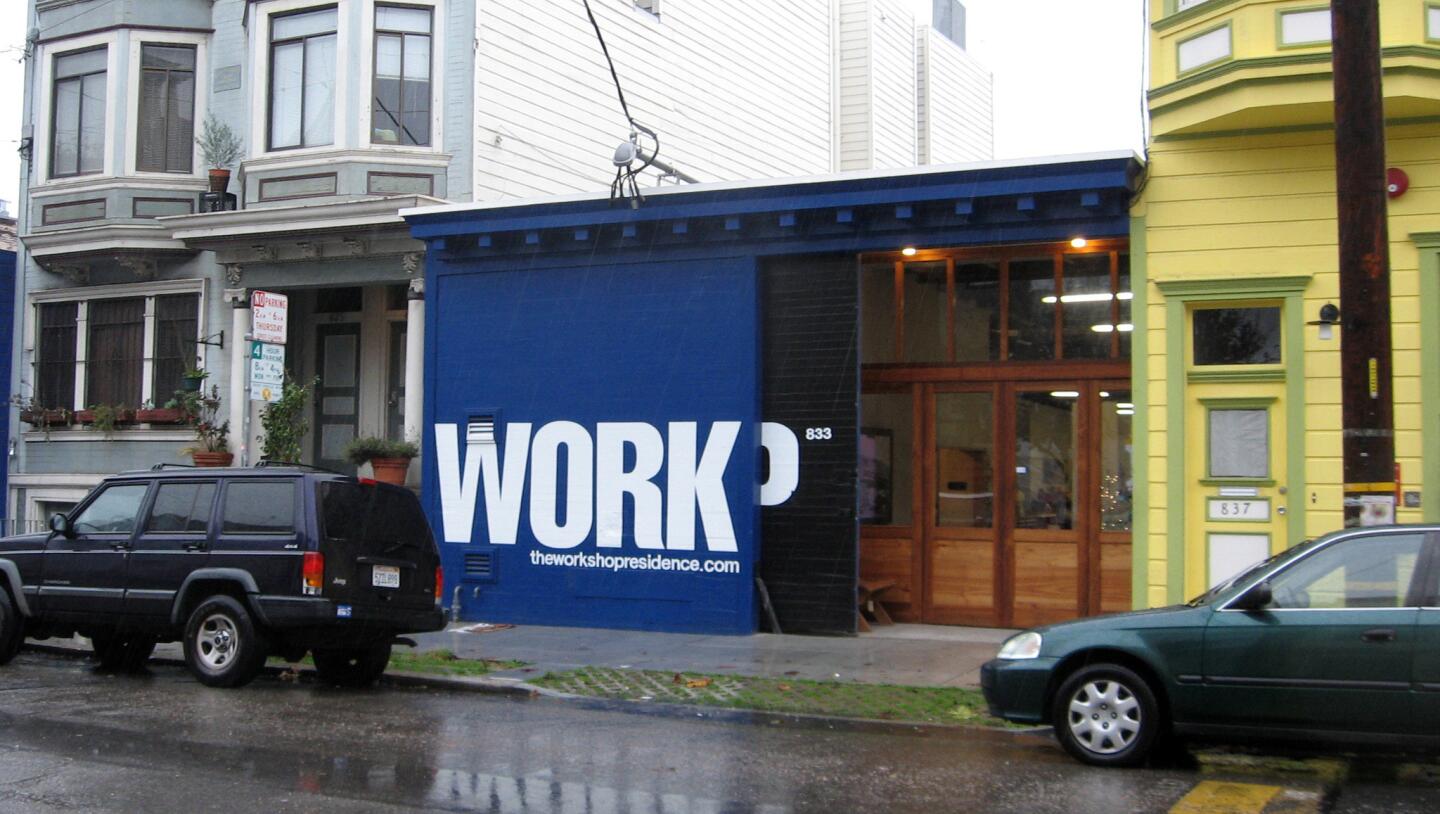
Behind the bright blue facade is a creative think tank, opened in 2012, that pairs visiting artists and designers with local manufacturers to create affordable, appealing textiles, housewares, apparel and other objects. Artists are selected for stays of several weeks to several months and have use of the workshop/gallery and its small staff. An added perk is the upstairs apartment, where artists literally live over the store. The end result of all that creativity is sold in the gallery and online, with profits split with the artist. Last fall, Jim Isermann was artist in residence, fashioning lowly moving blankets into vibrantly hued wall hangings and furniture coverings. 833 22nd St.; (415) 285-2050, http://www.theworkshopresidence.com. Open 10 a.m.-6p.m. Tuesdays-Saturdays. (Anne Harnegal / Los Angeles Times)
Advertisement
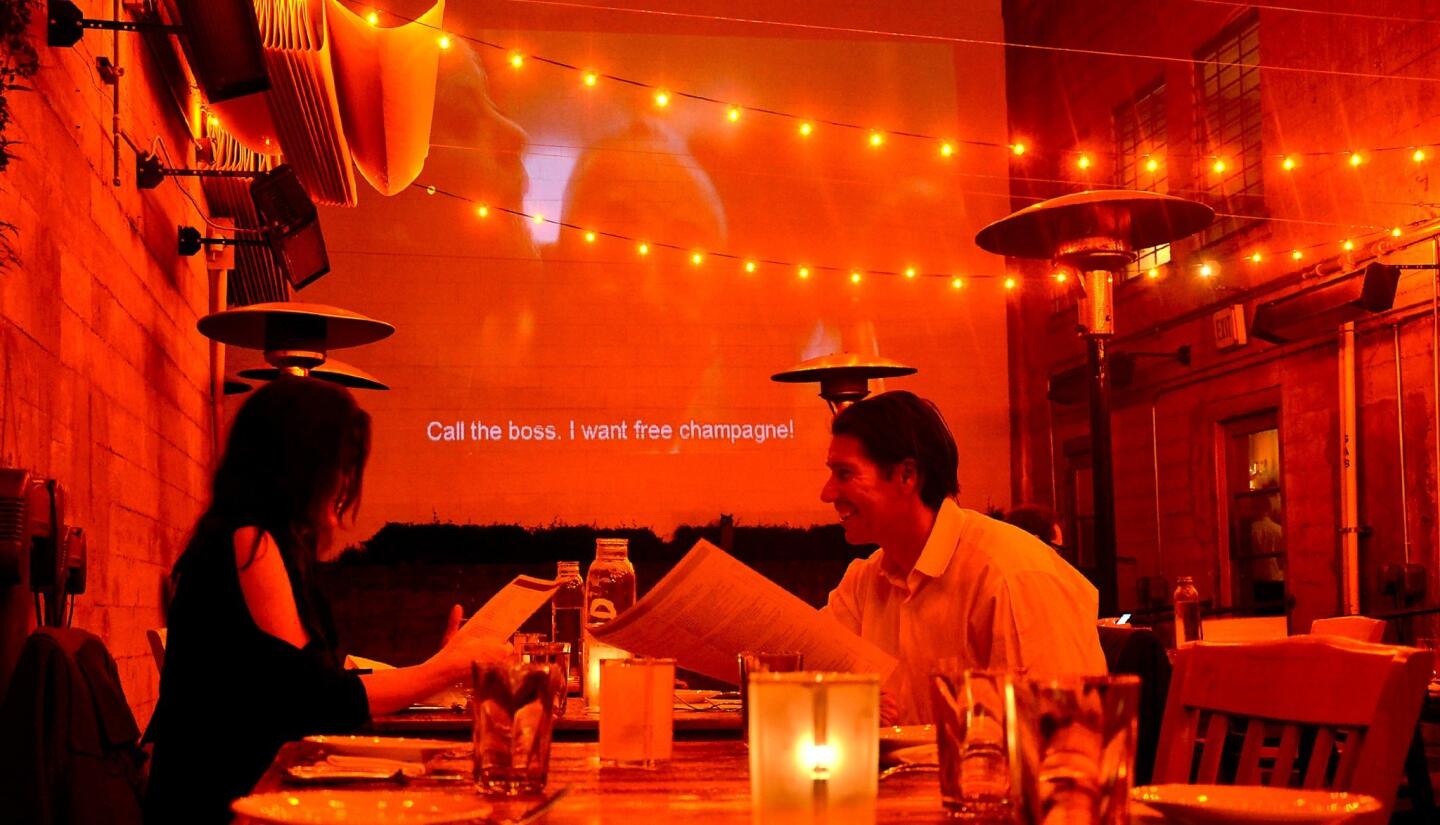
Great food, cool movies. The kitchen turns out elegant California-Mediterranean cuisine and a tall, whitewashed patio wall serves as movie screen. (Titles run in 2012 included “La Vie en Rose” and “The Brother From Another Planet.”) Images can be murky, but the food is Technicolor, the ambience singular. Dinner nightly (entrees $20-$29) and weekend brunches. The adjoining Laszlo bar (2526 Mission St., [415] 401-0801) serves up dim, trendy atmosphere with an indoor balcony where you can pretend you’re a Hungarian secret agent. (You can also order from the Foreign Cinema menu.) 2534 Mission St.; (415) 648-7600, http://www.foreigncinema.com. (Christopher Reynolds / Los Angeles Times)
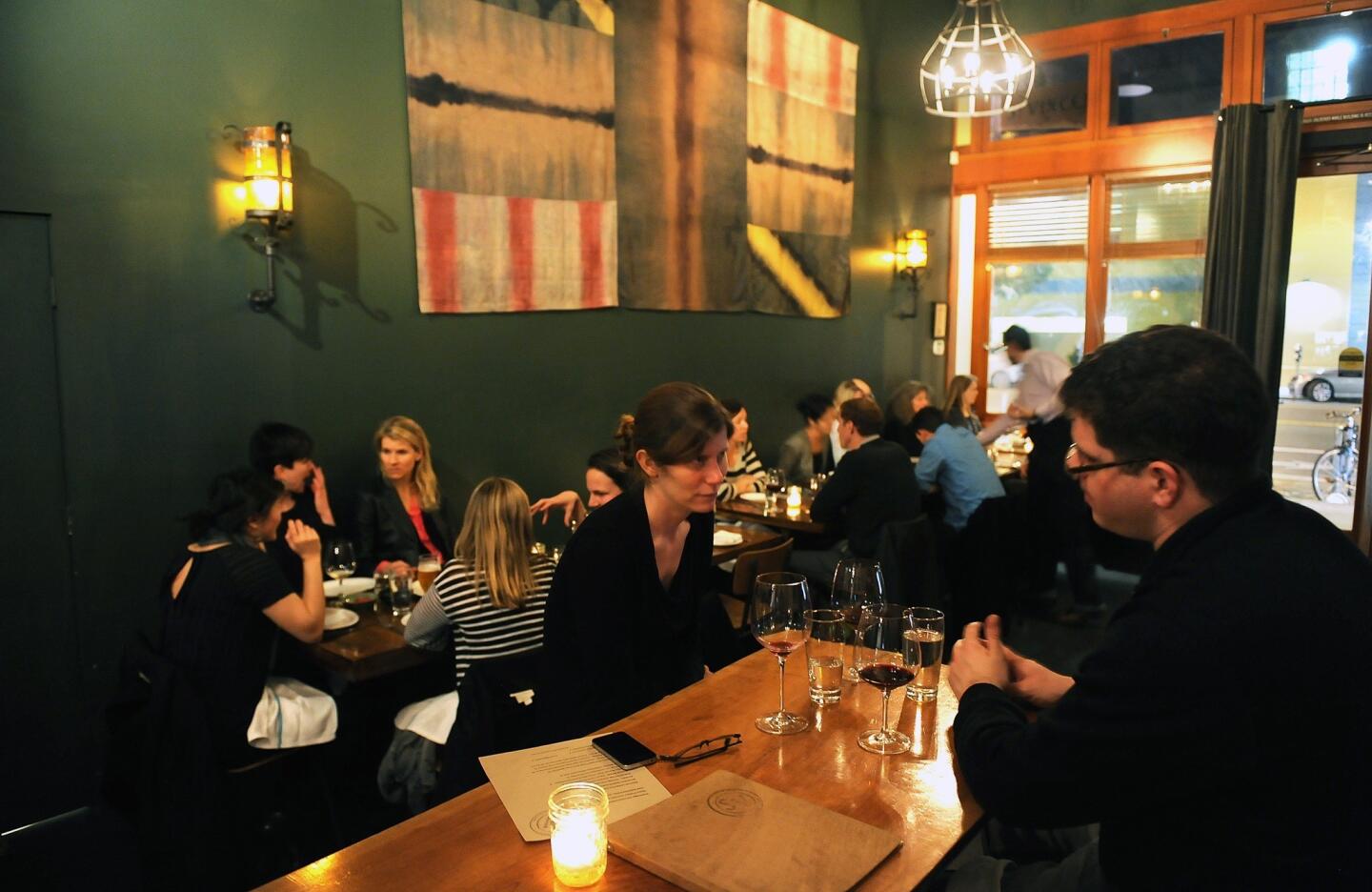
This long, lean space opened in May -- yet another restaurant in the booming Mission District -- and is going gangbusters. St. Vincent is the patron saint of wine and vinegar makers, and the wine list is a key attraction here. Menu is California-centric with global influences (entrees $24-$30). Besides reservations (which fill fast), there are 25 first-come, first-served seats at the stainless steel bar, chef’s counter and communal table. Owner is sommelier and author David Lynch, not to be confused with that other David Lynch. 1270 Valencia St.; (415) 285-1200, http://www.stvincentsf.com. (Wally Skalij / Los Angeles Times)
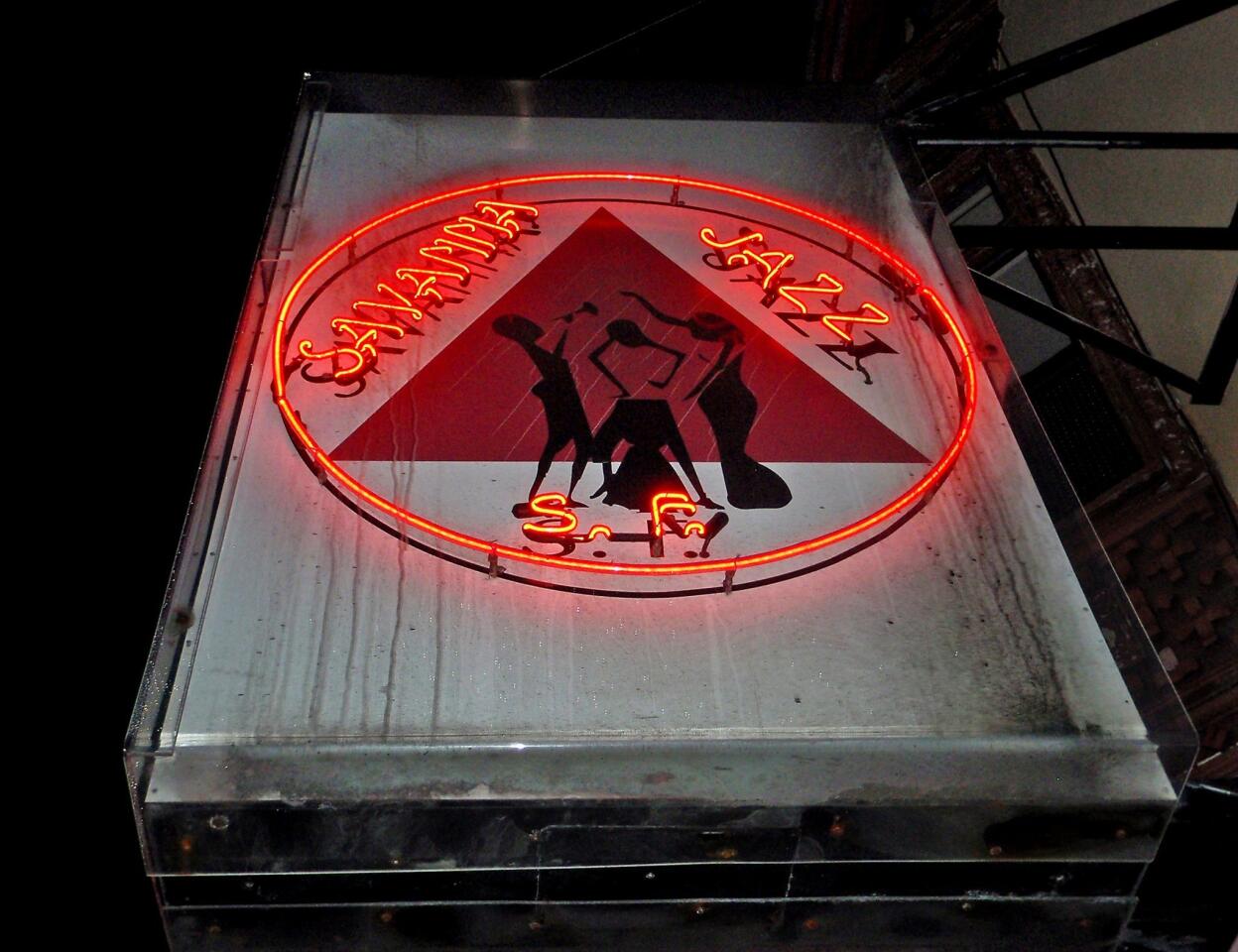
Need a place to unwind? Try this cozy, affordable retro jazz club set amid the taquerias of the Mission District. Live music five nights a week, with covers starting at $5. Thursday night jam sessions draw all levels of musicians, and the house band, led by trumpeter Eddie Ramirez, really kicks, blending traditional jazz and popular standards. Hearty burger and steak menu starts at $10. 2937 Mission St.; (415) 285-3369, http://www.savannajazz.com. (Chris Erskine / Los Angeles Times)
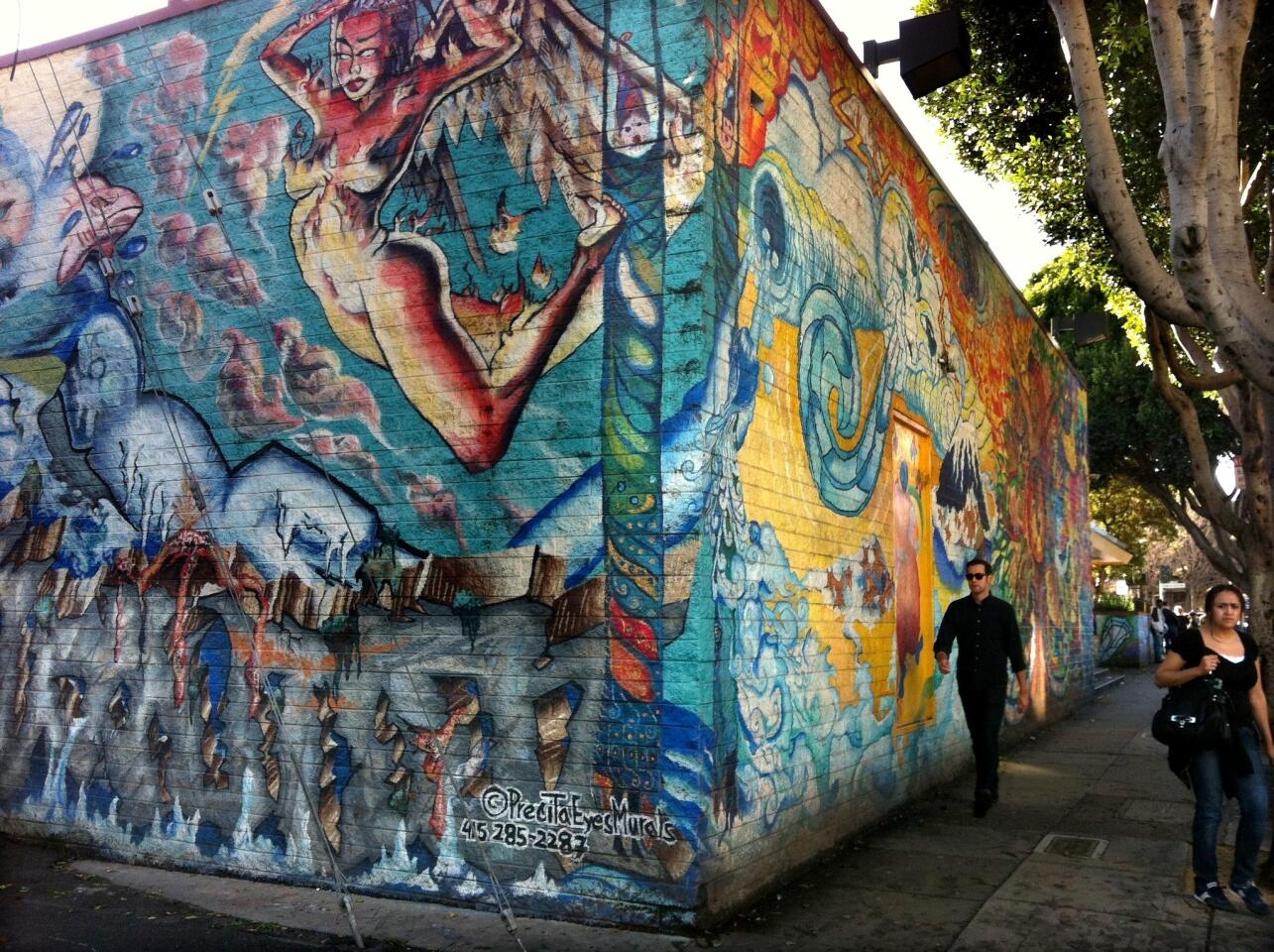
Precita Eyes, which was founded in 1977 by area artists, is a community-based arts center that acts as a de facto curator of the Mission District’s culturally resonant street art. Choose one of three walking tours to explore the rich variety of expression on display on the neighborhood’s walls. The Classic Mural Tour includes an informative slide show as well as a talk on the history of murals and the state of the city’s contemporary mural movement. More than 80 murals can be seen in an eight-block radius of the center. Tours from $15 to $20. 2981 24th St.; (415) 285-2287, http://www.precitaeyes.org. (Jessica Gelt / Los Angeles Times)
Advertisement
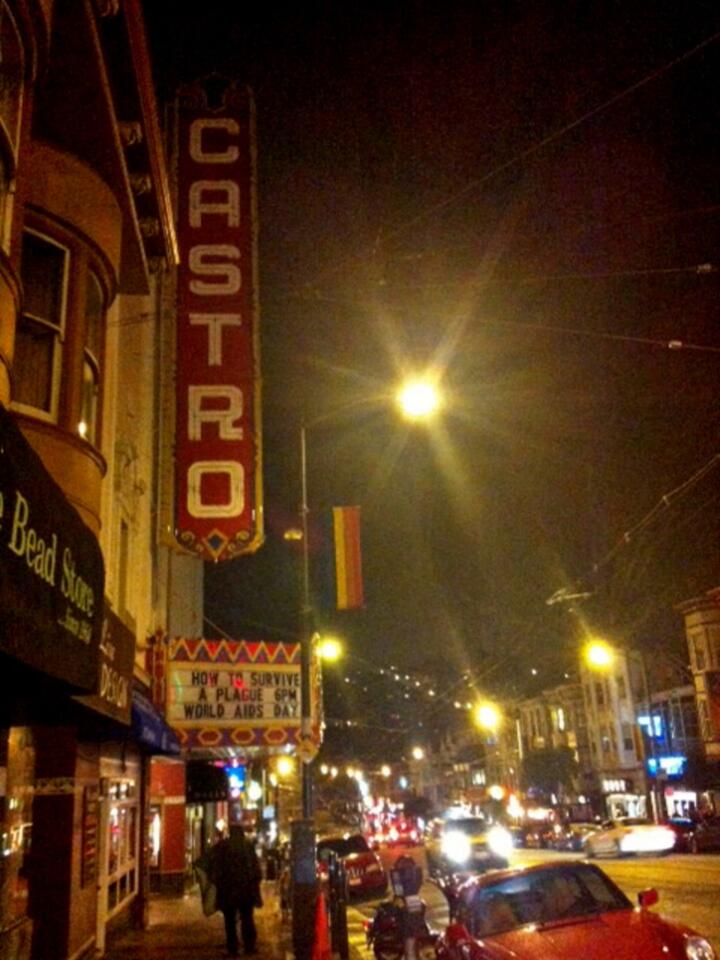
Built in 1922 by Bay Area architect Timothy L. Pflueger, this historic landmark is a grand movie palace still in operation.. Designed to resemble a Mexican cathedral, the theater has seating for more than 1,400, a vintage Wurlitzer organ and a massive Art Deco chandelier dating from 1937. It once showed first-run movies, but now it’s mainly an art house with a mix of classic and contemporary programming. A recent calendar included films as diverse as Fellini’s “8 1/2,” “Argo” and “Ghostbusters.” 429 Castro St.; (415) 621-6120, http://www.castrotheatre.com. (Jessica Gelt / Los Angeles Times)
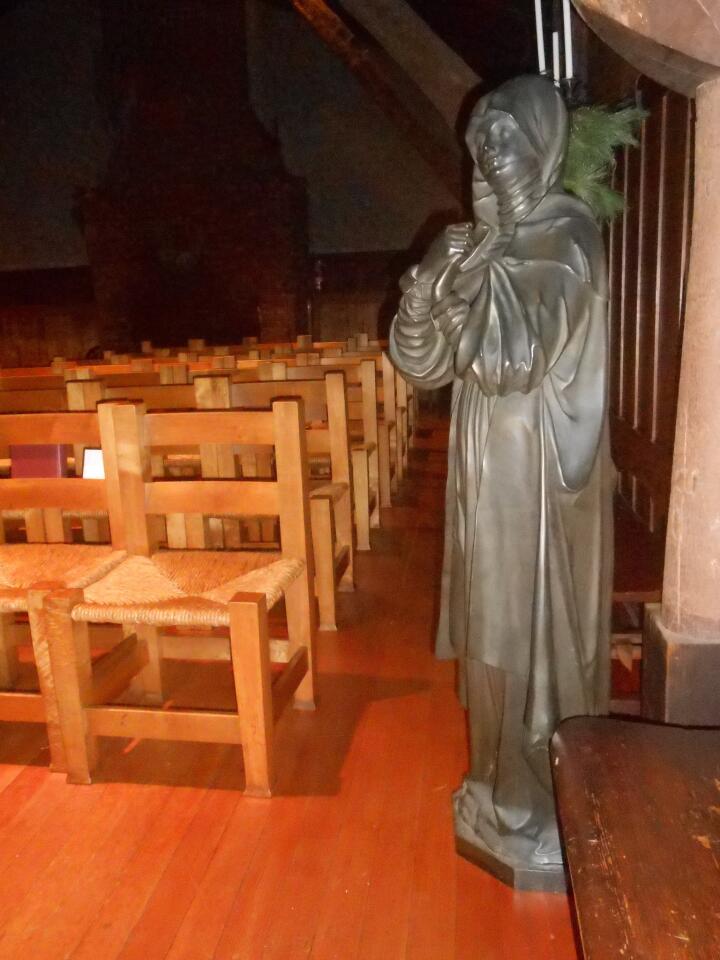
You may be tired from the walk if you arrive on foot at this national historic landmark in Pacific Heights, but time spent in this island of solitude, completed in 1895, will revive you. Its interior glows with the richness of its redwood walls. A fireplace in the back, whose andirons rise to become small crosses, puts you in mind of burning love, not the fires of hell. The religion grew out of the works of Swedish philosopher Emanuel Swedenborg, who abandoned his work as a scientist to contemplate Scripture. Whether you agree with him or find yourself far distant, the words of “Commonplace Blessings,” to which a prayer book fell open on a late Friday afternoon, ring true and well: “Accept, oh Lord, our thankfulness for the countless commonplace blessings that surround us, so familiar that we often ignore them...so abundant that when we begin to count them our complainings are shamed into silence.” The church is trying to establish public hours for visitation, but for now, you can call ahead or knock on the door from 1-6 p.m. Mondays-Fridays. Services are at 11 a.m. Sundays. 2107 Lyon St.; (415) 346-6466, http://www.sfswedenborgian.org. (Catharine Hamm / Los Angeles Times)
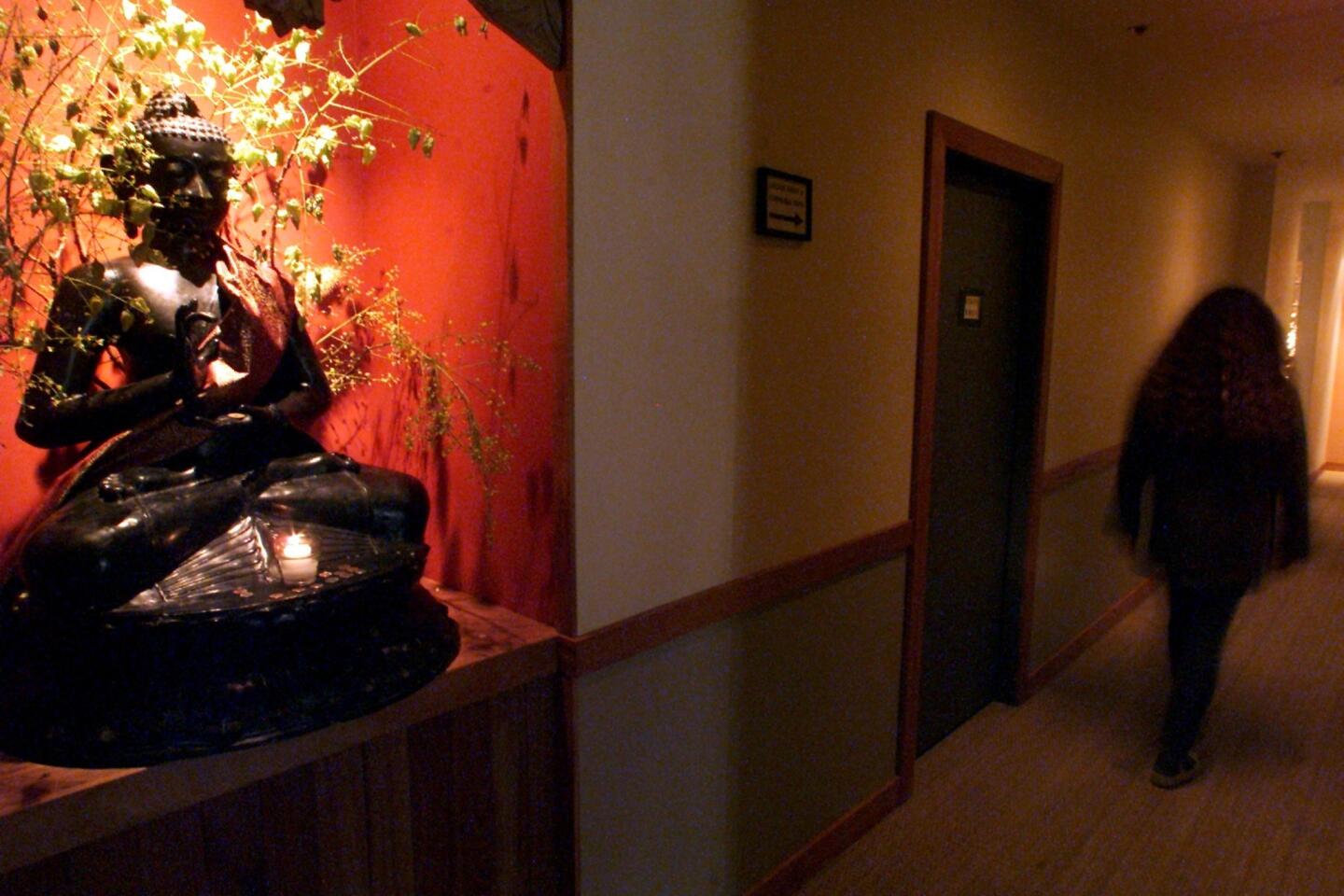
This place is a little like life itself: It’s had its ups and downs. Since its acquisition by hotel group Joie de Vivre, it’s in an up period. It’s been refreshed, which is how you’ll feel when you emerge from a communal or private bath, maybe coupled with a massage. Communal baths cost $22 weekdays, $25 weekends. Women take the plunge Sundays, Wednesdays and Fridays; the men Mondays, Thursdays and Sundays. Tuesdays are co-ed (bathing suits required). I tried the private bath/shiatsu massage Bliss package for $155. This is the spa place for nonspa (and nonrich) people. Massage and private bath packages begin at $120. 1750 Geary Blvd.; (415) 922-6000, http://www.kabukisprings.com. (Robert Durell / Los Angeles Times)
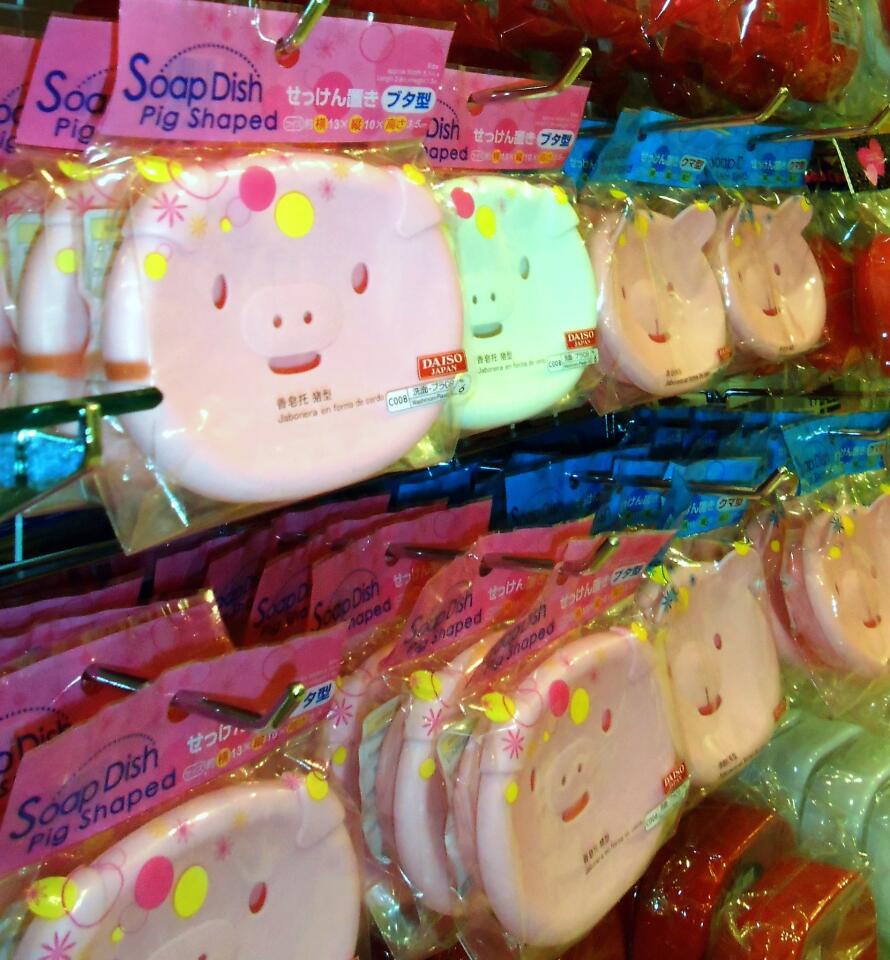
If you’re a fan of 99 cent stores, welcome to Daiso Japan, a slight step above both in price (most items $1.50) and merchandise. Because, really, who doesn’t need an earbud spool? A pig soap dish? A contact lens case shaped like a tube of lipstick but with openings at each end for the lenses? (Turns out I didn’t -- this one doesn’t work well unless you’re wearing soft, slightly bendable lenses.) Browsing is free if you can resist. (Catharine Hamm / Los Angeles Times)
Advertisement
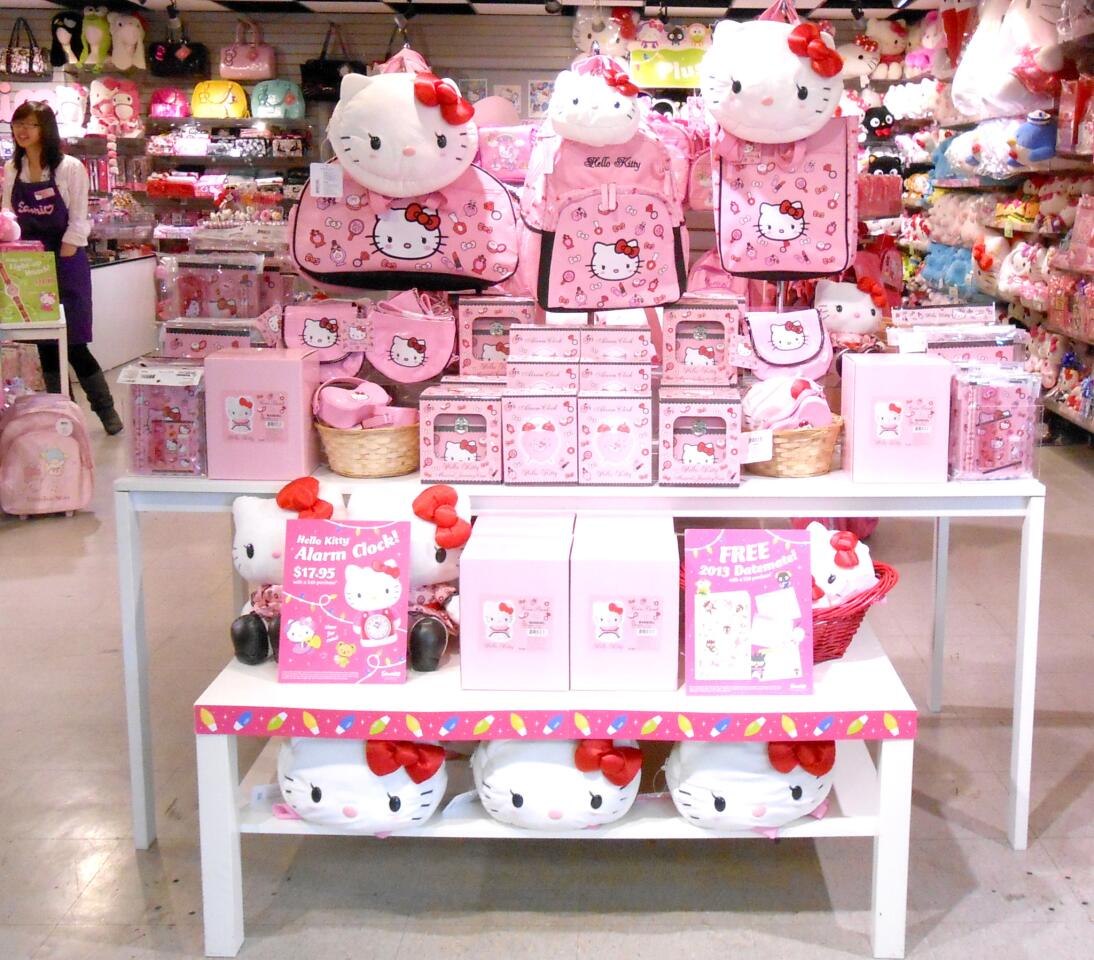
If that doesn’t make you smile, the Sanrio store may. The tending-toward-pink array of merchandise featuring Hello Kitty has made a fortune for Sanrio, has made fans out of millions children and adults, and has made some folks want to run screaming in the other direction. Well, meow. Also free if you avoid putting your paw in pocket, pulling out wallet. No. 315 Peace Plaza West Mall; (415) 614-2700. (Catharine Hamm / Los Angeles Times)
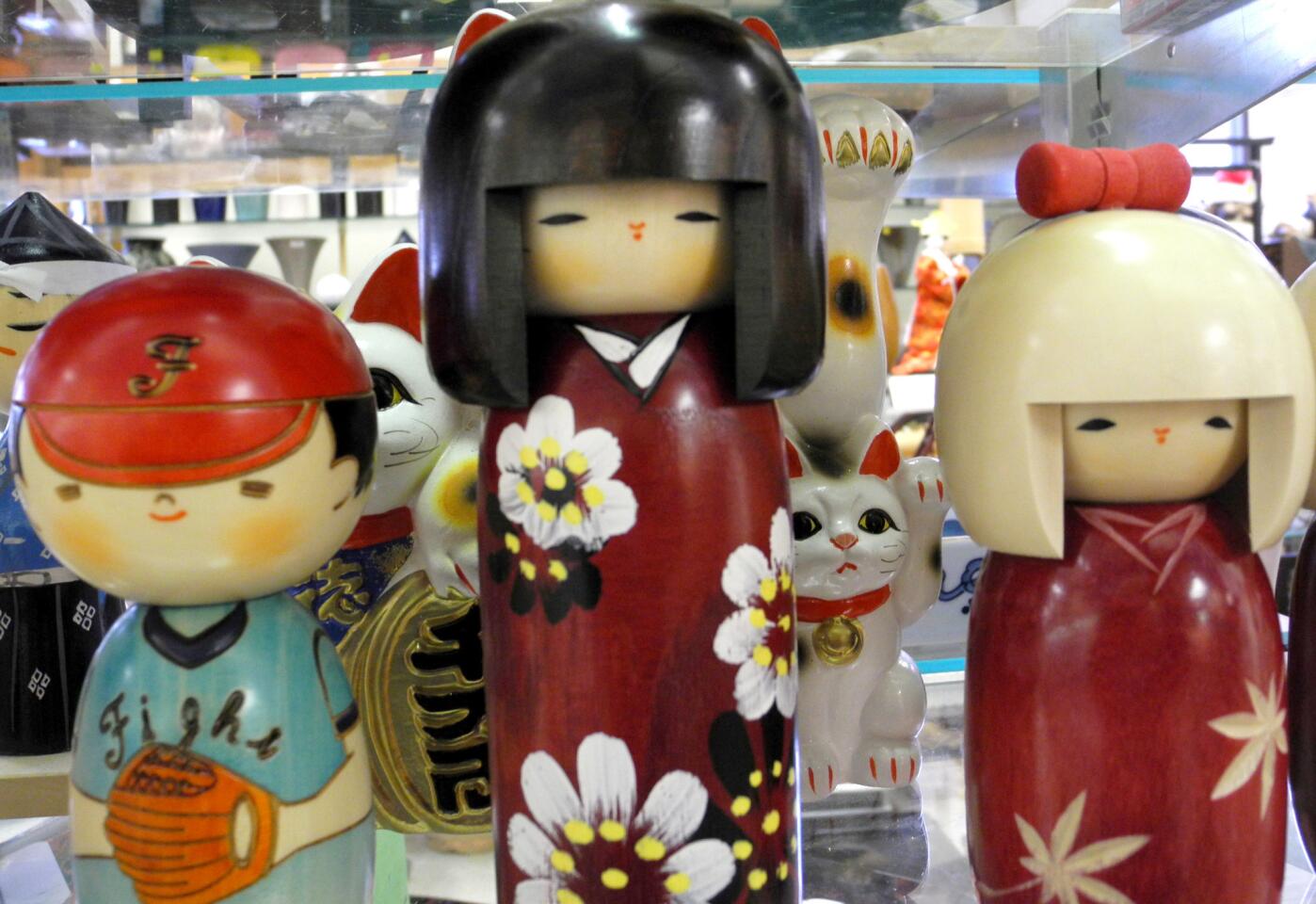
Need something more manly? You could try Soko Hardware, which has the tools you need for any project and also an array of Japanese home decor items whose grace contrasts with the testosterone of the tools. 1698 Post St.; (415) 931-5510. (Catharine Hamm / Los Angeles Times)
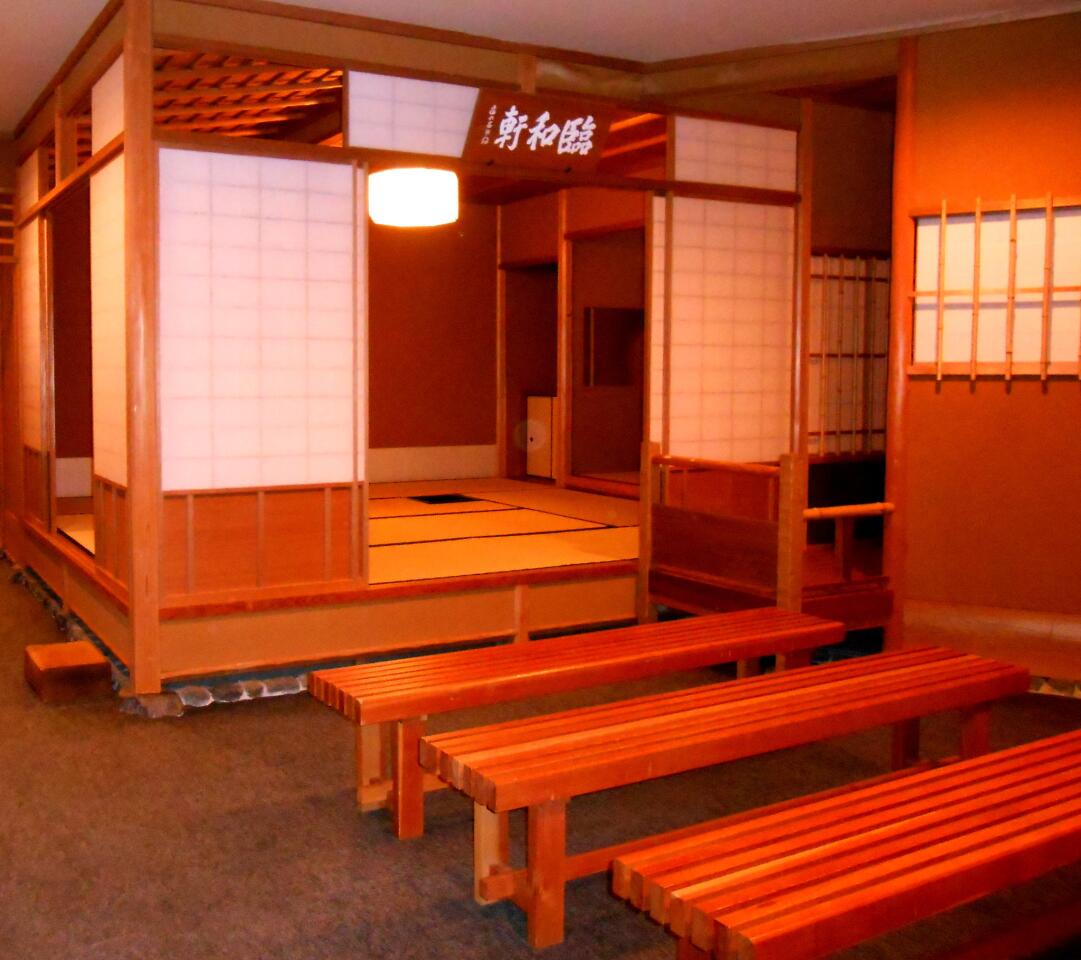
If you’re in San Francisco on April 13 or 14, you can attend the spring tea ceremony and discover this treasure of culture and construction. The framework for the two tea rooms, one large for groups and one small, was built in Kyoto, Japan, brought to San Francisco and completed in the mid-’80s. The entrance to the small tea room is a story unto itself: It’s purposely small so that a samurai, for whom the tea ceremony was originally developed, would have to leave his sword outside. The beautiful cedar, cultivated to have few knots, is planed, not sanded, and the intricate joinery speaks of old-world craftsmanship. The decor, which is subtle, changes with the season. 1759 Sutter St.; (415) 921-1782. (Catharine Hamm / Los Angeles Times)



